We offer layaway, spread payments on the piece of your dreams. Ask us for details. Free insured shipping on all orders !!!
Weekly Antique Jewelry Herald (archive)
Jewellery Fireworks The Adin Way:
(soundless and environmentally friendly)
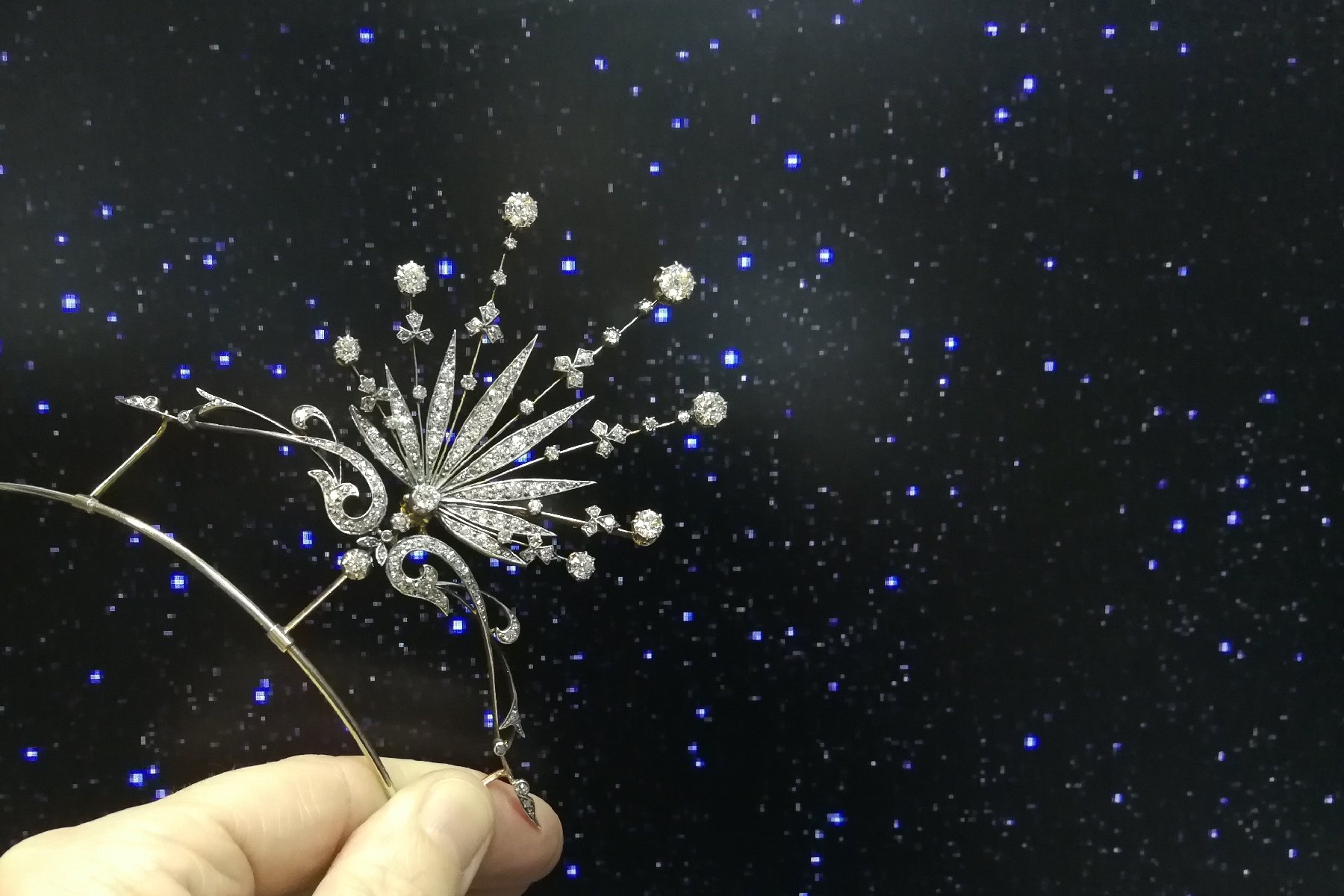 |
We would like to congratulate you again
for showing the great taste
to call upon our antique jewellery services.
Happy New Year!
The Garden of Adin Presents:
A change of balls....
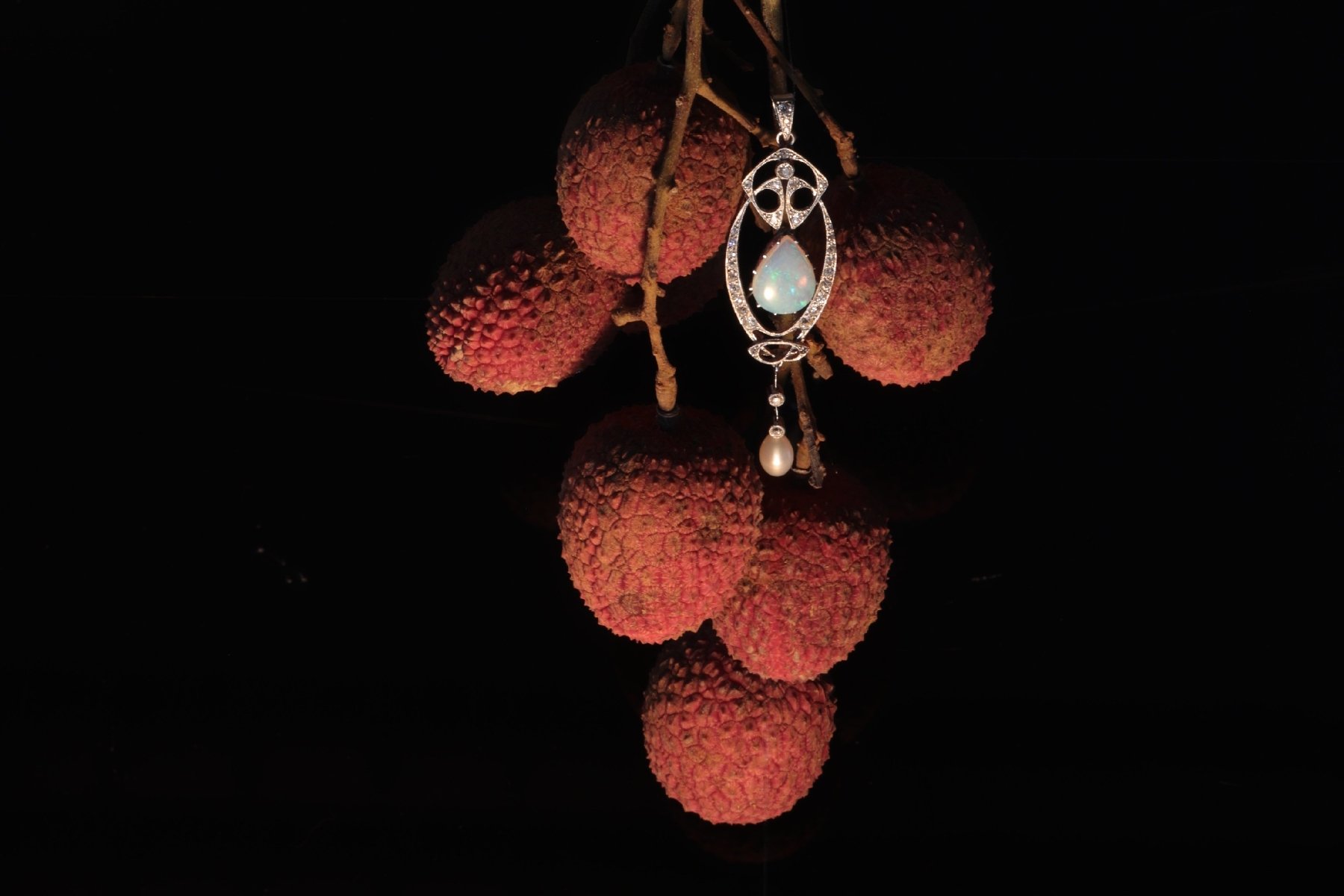 |
Here at Adin, we gladly accept every opportunity for a celebration, especially this time of the year. Even though we enjoy taking out our regular decoration, we felt that our current jewellery collection could use a change of gear.
Now, isn't this ensemble of natural baubles and whimsical platinum Art Nouveau pendulum the pinnacle of creativity of a holiday spirit in a Fine Antique Jewellery Store?
Imagine how the wintery winds flow from the hinge of the 1910's necklace through the swirling old brilliant cut diamond curves to the glistening 3.20ct. opal while the bottom pearl drop sways between these tropical trinkets. A festive ambience for every season!
The Garden of Adin Presents:
Reflections of centuries of memories
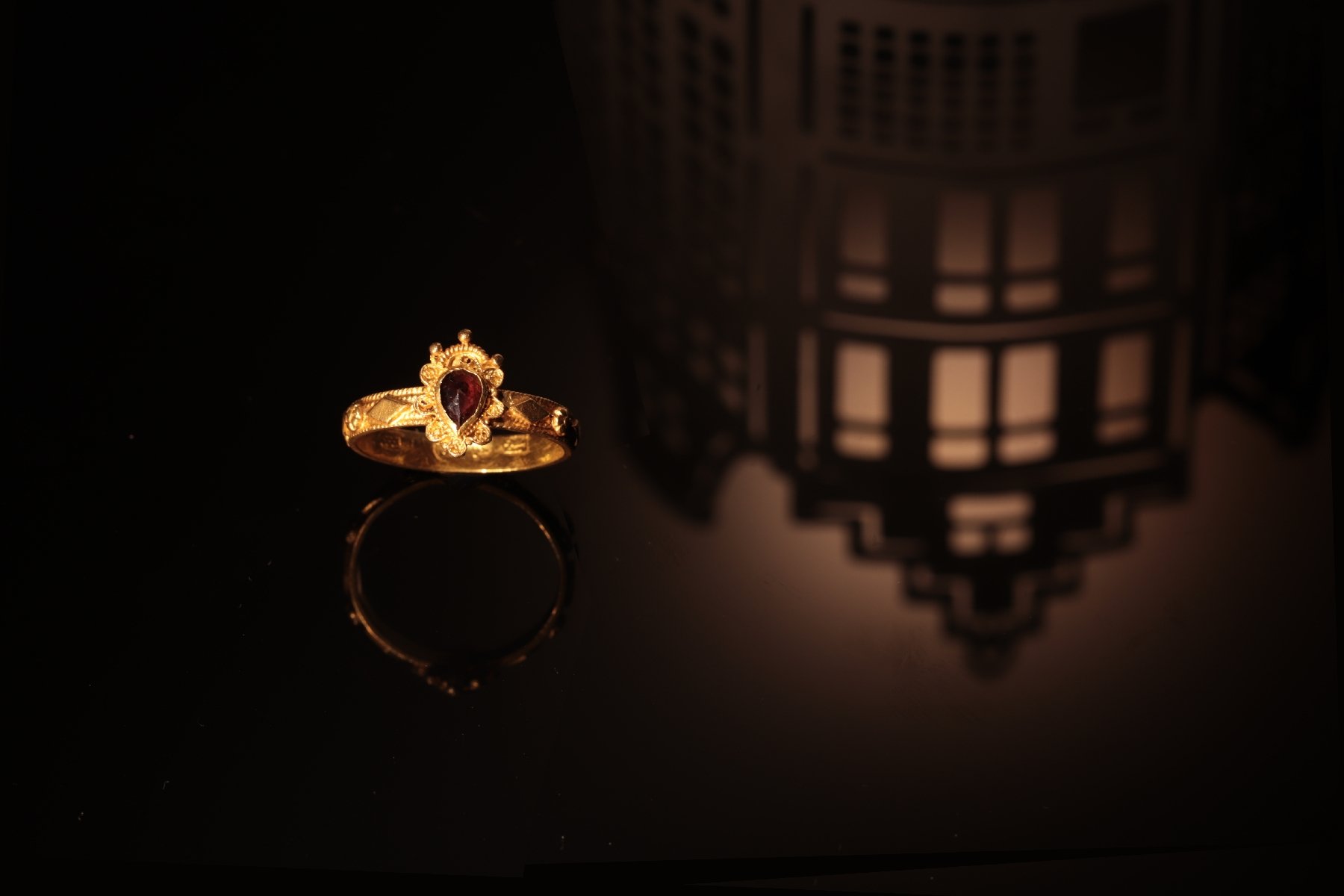 |
We are thrilled to share the marvel of this authentic antique yellow gold ring of high carat gold, as it's the most literal timestamp possible for the year 1692.
With many decades of dealing in antique jewellery on a daily basis, we can consider that it's extremely rare to come across jewellery of such an old age and -on top of that- with hallmarks. How remarkable it is that the ring clearly bears the hallmarks for Amsterdam and the year letter F for the year 1692. To come along Dutch 17th Century jewellery that is so clearly hallmarked is extremely rare!
As an extra mark of the baroque period in which this unique ring came to be, its excentric design consists of a drop shaped rose cut garnet top with a filigree aura and a ring shank covered with gold lozenges alternating with gold flower granules.
Once, this ring may have been crafted as part of a person's history, but now each person it touches actually becomes part of the ring's own chronicle. What an extraordinary experience to be part of something before and beyond yourself.
The Garden of Adin Presents:
So much history in just one piece of jewellery!
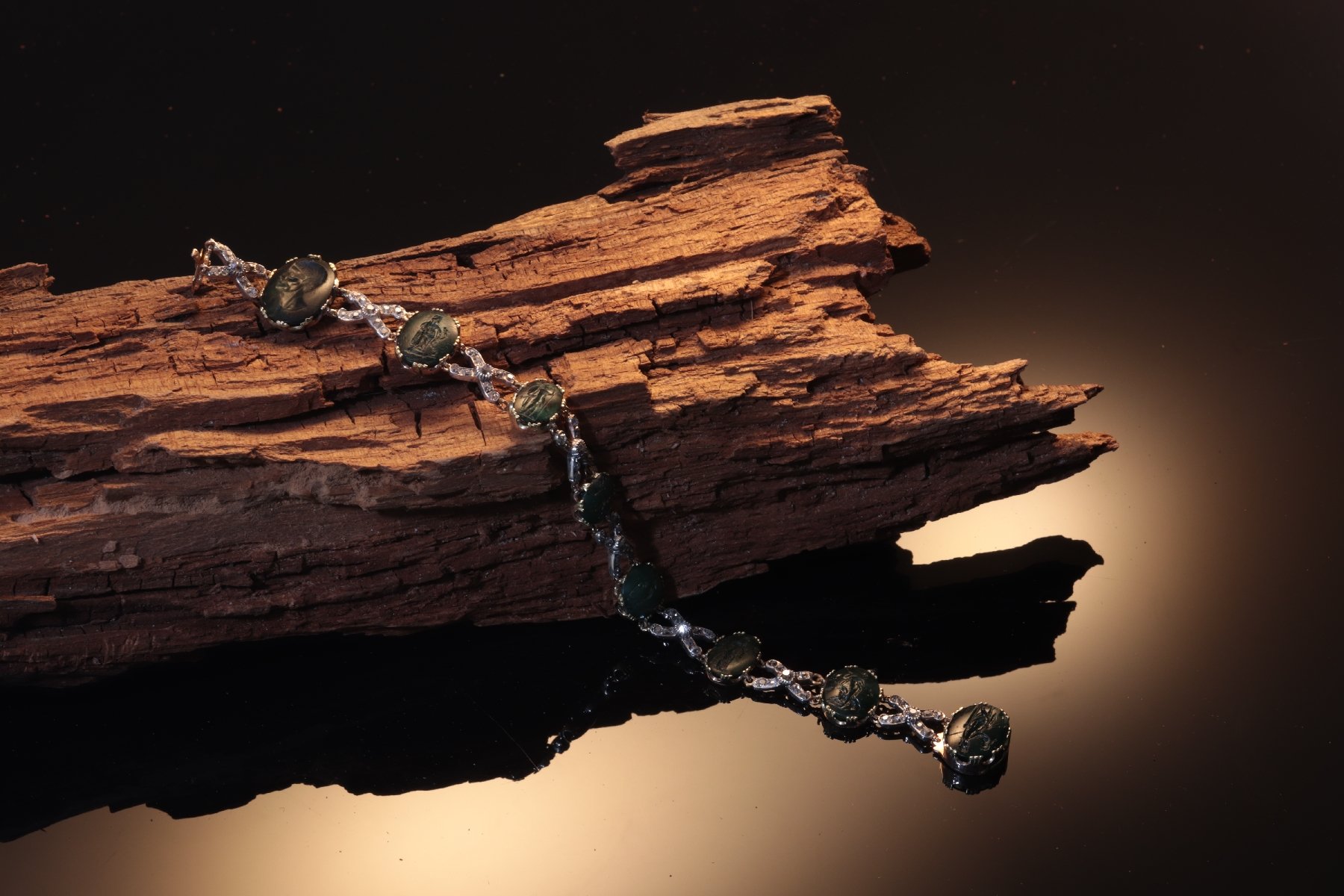 |
We could have never imagined how much history and exact data is concealed in this late 18th Century bracelet with chromium chalcedony intaglios dating back from between 100 BC until 100 AD set in 14K bi-colour gold alternating with silver-encrusted old mine brilliant cut diamonds.
One interesting fact we already want to point out to you is that one intaglio is the same type as the one of Julius Caesar's own signet ring, inherited and worn by Augustus.
We invite you on this journey back in time, but be warned: you have to appeal on your stamina.
The Garden of Adin Presents:
The Frog King and ..... you?
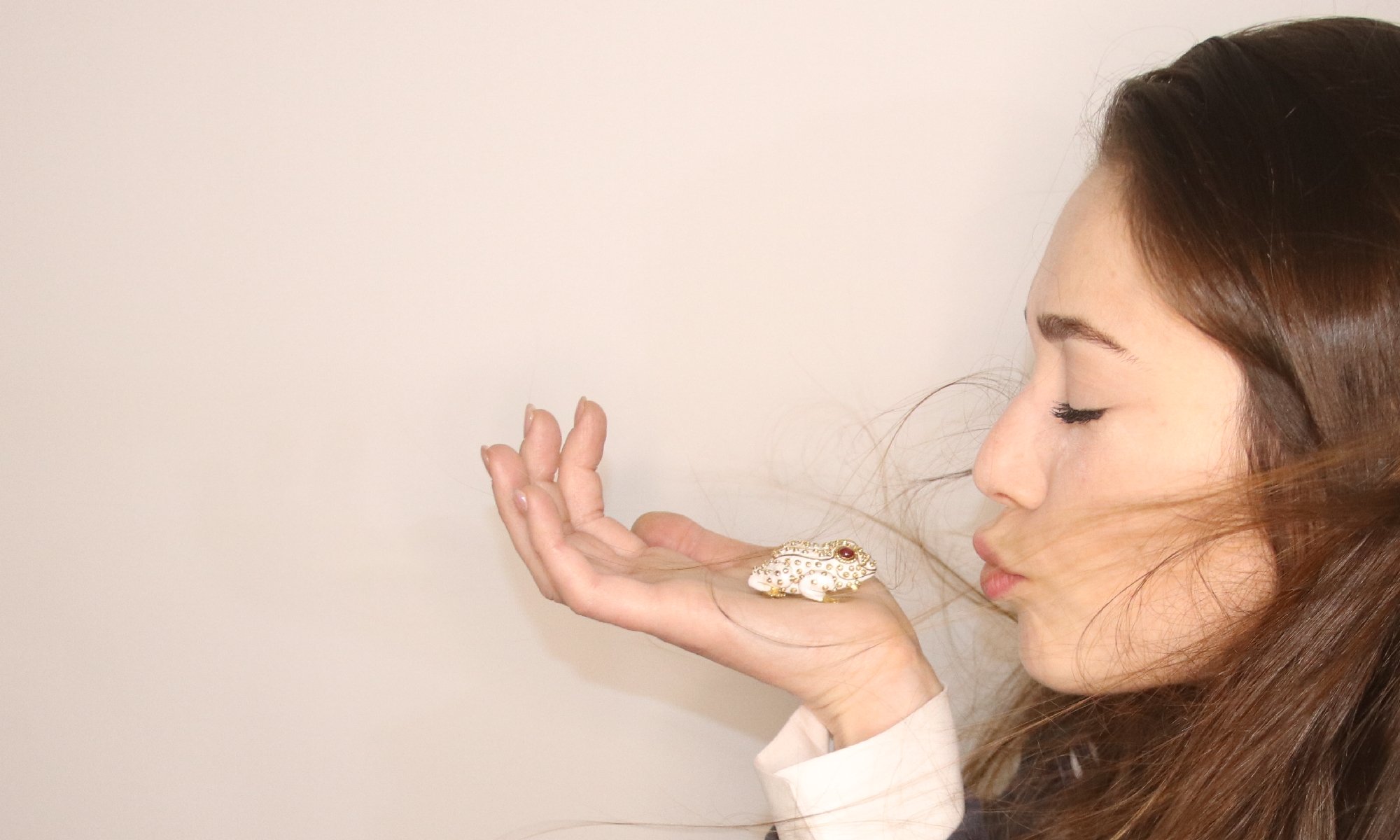 |
Once upon a time, a frog king resorted for a while in the Garden of Adin until he was ready to go out and search for the one princess to kiss him into his regular human form. When this frog brooch appeared last week, we couldn't help but notice the similarities between the frog king and this jewel's white enameled skin, its 18K gold body with gold glands and its ruby cabochon eyes.
Is this a gift of the king's gratitude for our hospitality and a sign that he has found his true companion? We can clearly see that the brooch wears the name of a famous American jeweler, David Webb, so would the king be living in the US now? Or did the story of the Princess and the Frog didn't really end as we're all made to believe? Could the king still be dwelling in this gold frog brooch, waiting to be kissed?
Important info from Adin:
Past week we sent you a mail as news@antiquejewel.com
In case you have not received it,
please check your spam filter
and add it to your trusted contacts.
 |
Dear fellow antique jewellery aficionado,
We first came online in February 1994 so we are online now for over 25 years! And it is not that we have not ever changed anything since the beginning of our online presence, but it was about time for us to move to a modern mailing system.
Our Weekly Herald is not the average hard-core selling communication as all the others we are all too familiar with. Every week we try to come up with an interesting, nice and/or funny story and we put a lot of effort in making special real pictures with our original antique and estate jewellery (we do not do photoshopping). And when we achieve a smile on your face with it, we are happy.
Here you find a link that will bring you to the archives of our Weekly Herald and in case you want to invite your friends to subscribe to our Weekly Herald, please let them visit: our subscription page.
This will be the last mail from this account.
So please add our new address
- news@antiquejewel.com -
to your trusted senders list!
The Garden of Adin Presents:
A brand new mailing system...
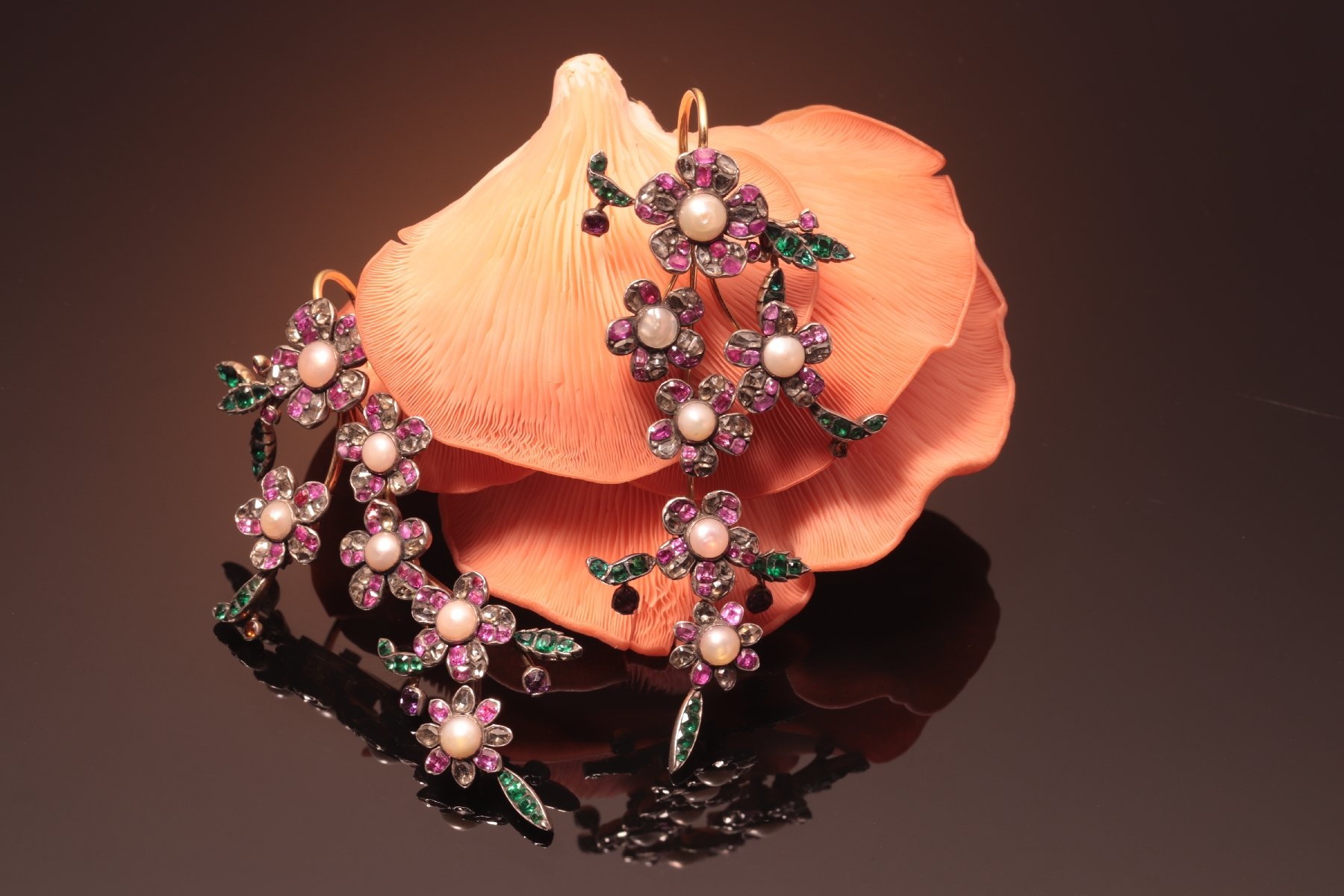 |
Adin Antique Jewellery presents a new mailing system..... As technology constantly changes and Adin Antique Jewellery wants to stay on top, we decided to change our email system to use the latest technologies in
mass-emailing. By doing so we will be able to provide our customers with the best possible experience ever.
From now on, all mailings will be sent from "news@antiquejewel.com", so please add this mailaddress tou your allowed senders list.
If you know someone who might be interested in our Weekly Herald, please forward her/him this link : our subscription page
The Garden of Adin Presents:
Time to start dreaming of a white Christmas
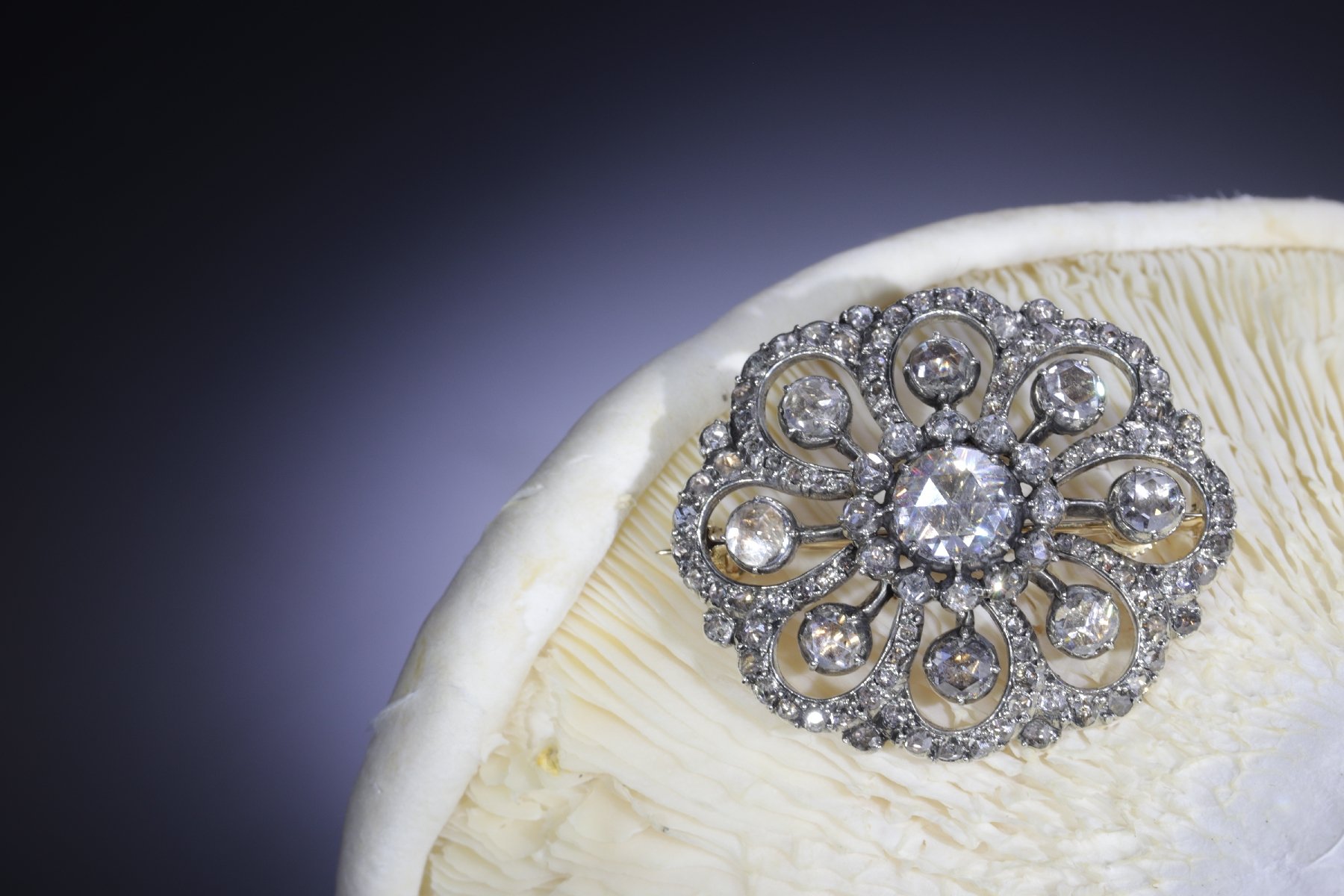 |
The Garden of Adin Presents:
Victorian antique ring with diamonds and emerald
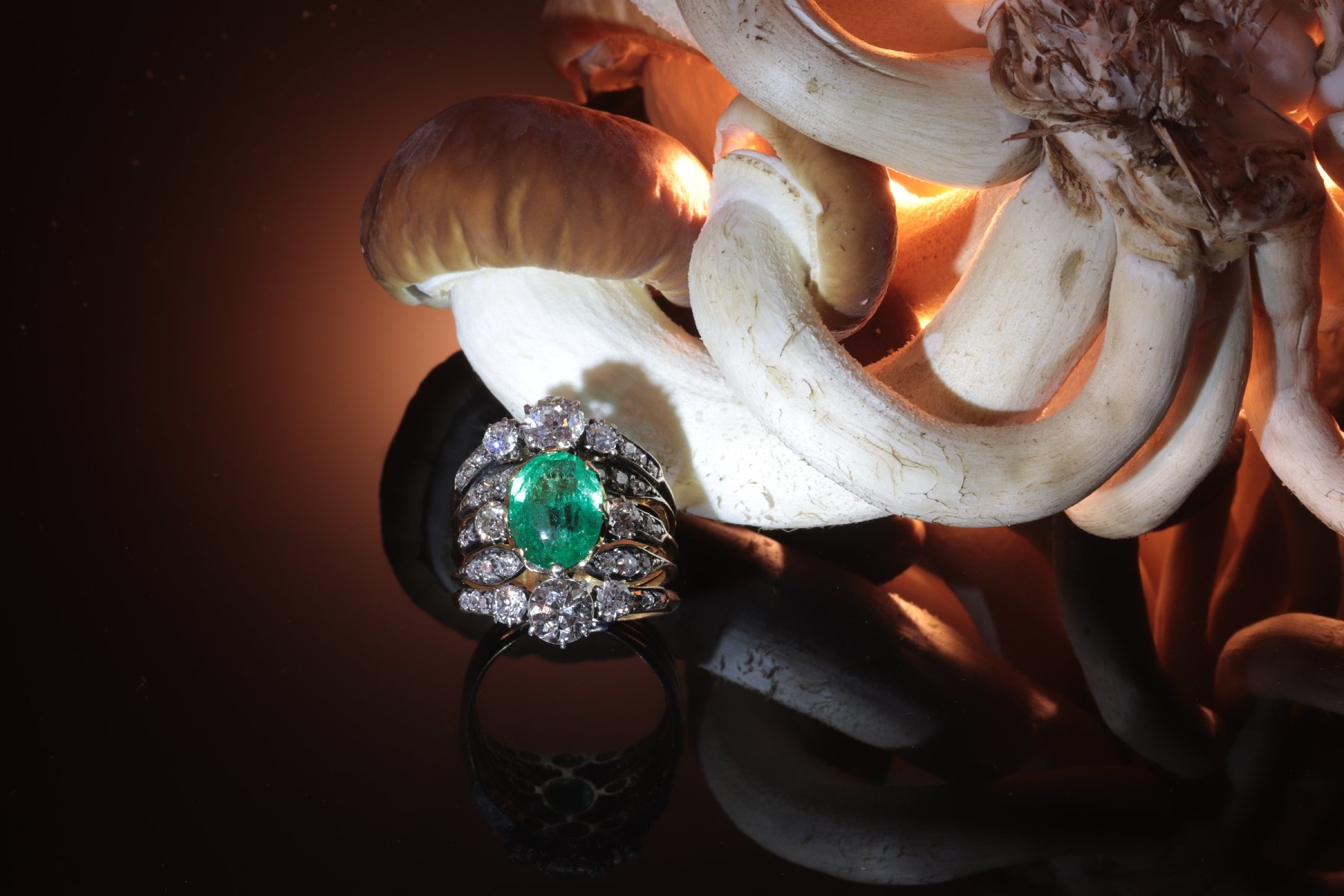 |
Adin Antique Jewellery presents this astonishing Victorian ring starring in Eran Riklis' thriller 'Spider in the Web' alongside Sir Ben Kingsley and grande dame Monica Bellucci.
Often before, Adin received the honour to be the supplier of props for international movie productions, but it's truly a premiere that one of our antique jewellery pieces plays the key role in the story line. A ring as the lead role, a real hero prop, are you intrigued yet?
After keeping this famous jewel on hold during the production period for about one and a half year until the movie's world premiere at the end of August and the beginning of September 2019, we can now finally reveal its splendour and character to all of you.
The true eye-catcher of this Victorian ring is a 3.50crt oval cut emerald in an 18K yellow gold setting, vertically aligned with 2 old European cut diamonds. This starry centre is surrounded by 34 dazzling diamonds, which are set in silver and radiate over five gold shoulders on each side.
Adin Antique Jewellery Presents:
1½ meter gold antique chain (close-up)
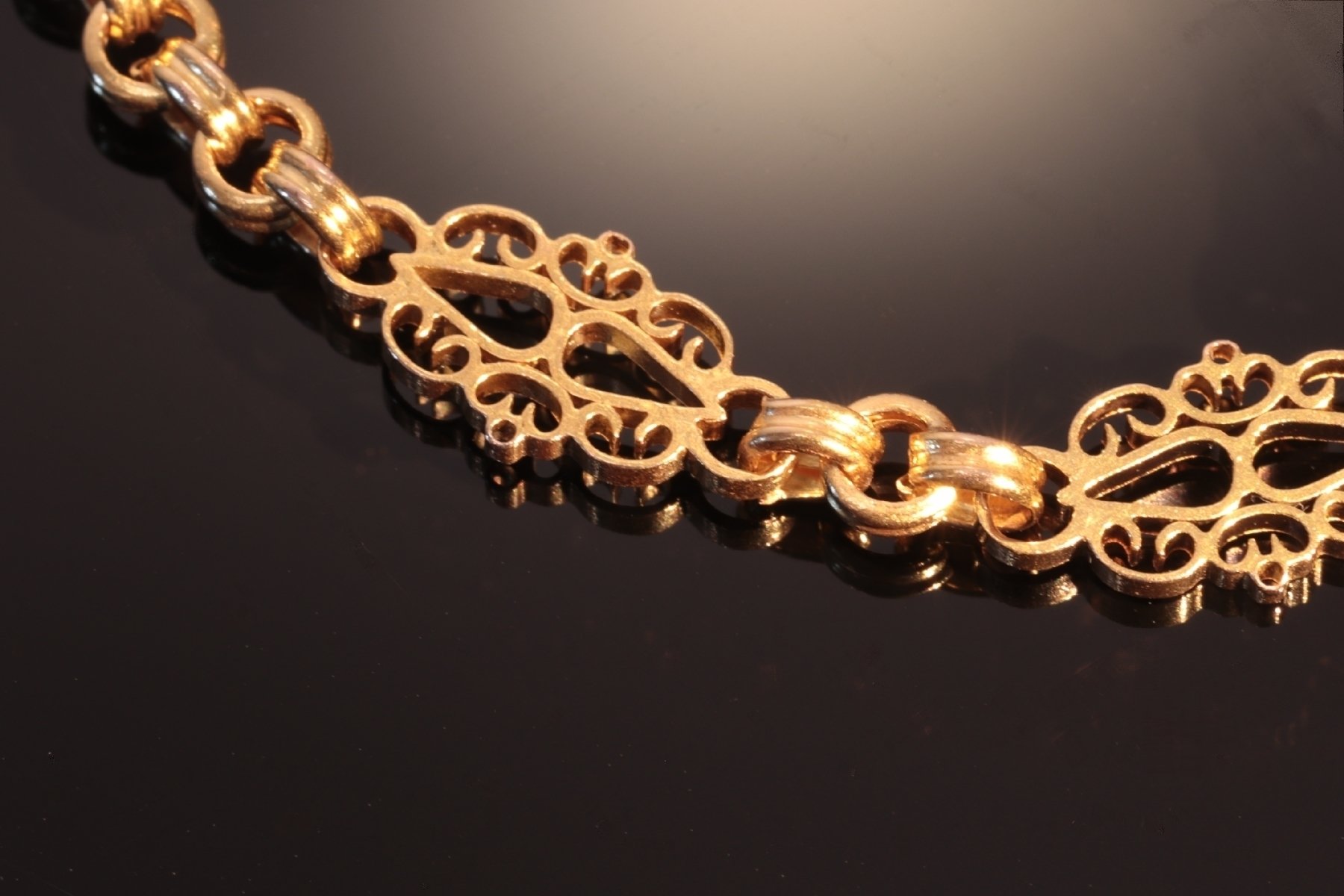 |
Dare to enter The Garden of Adin?
Happy Halloween!
 |
The Garden of Adin presents:
November Night...
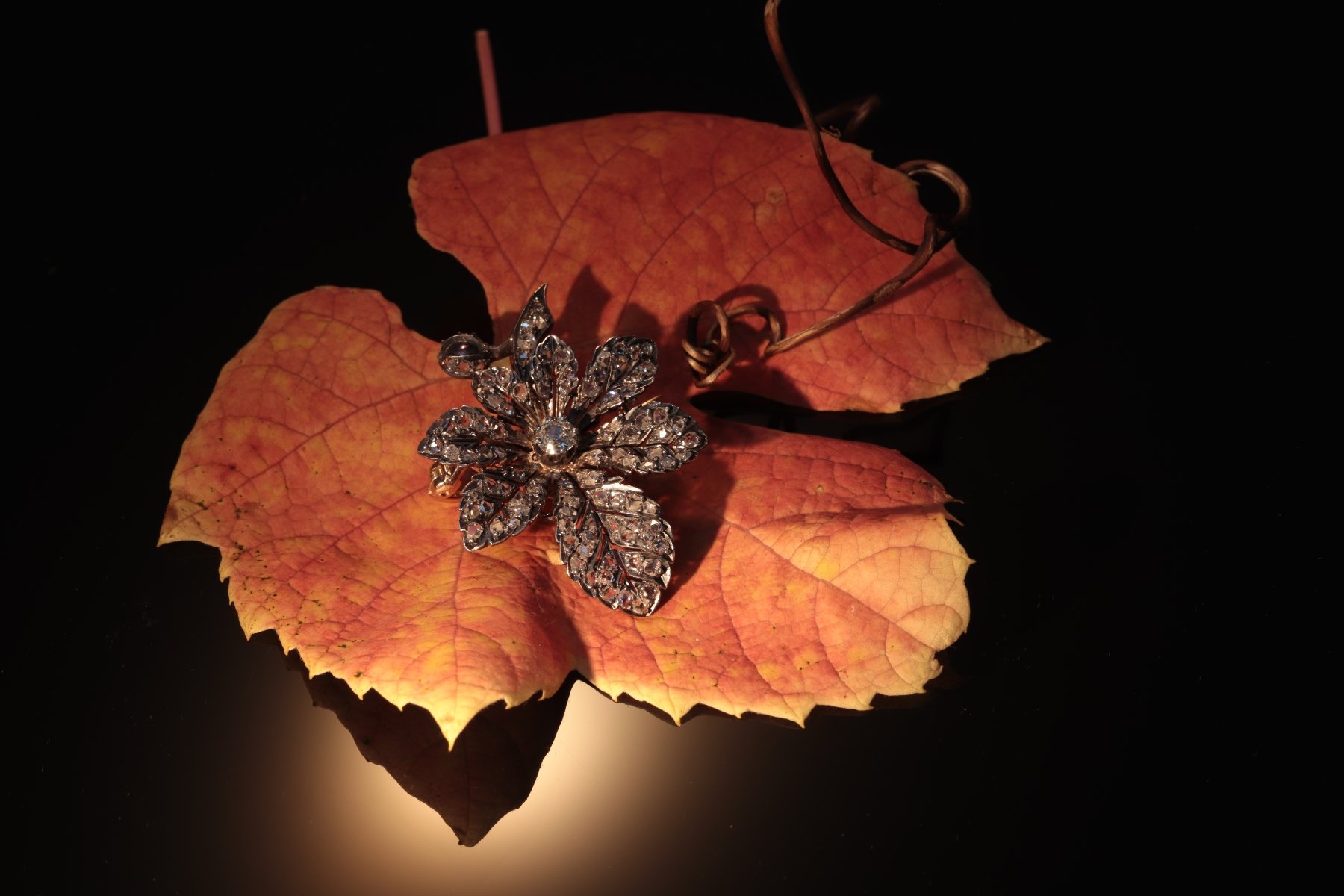 |
"November Night"
Listen...
With faint dry sound,
Like steps of passing ghosts,
The leaves, frost-crisp’d, break from the trees
And fall.
Adelaide Crapsey, American poet, 1878-1914
The Adin Antique Jewellery Museum
Of Fairy Tale Artifacts Reveals:
William Tell story confirmed by find of original apple and arrow!
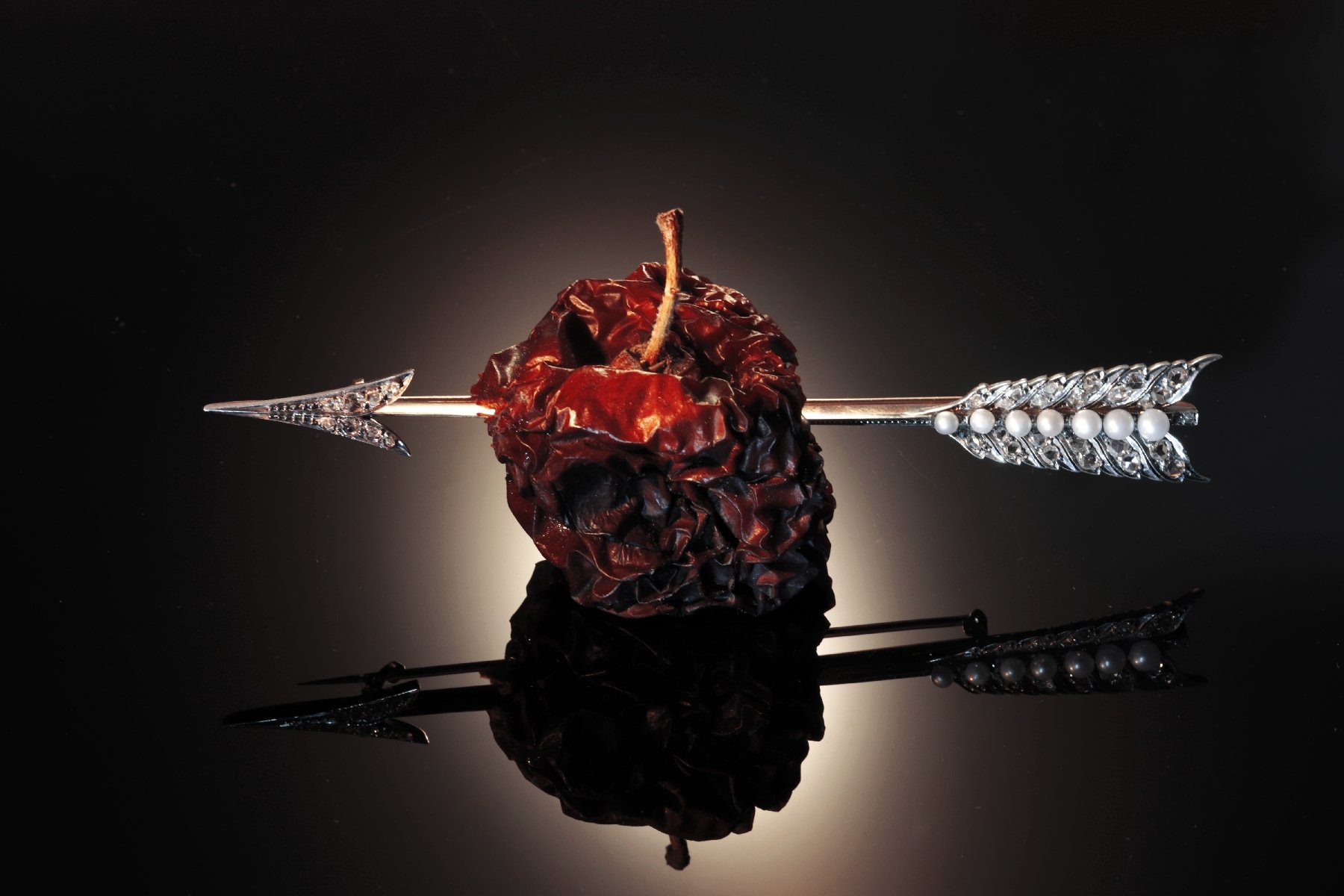 |
According to legend, in 1307 the Uri region was subjected to the tyranny of Gessler, an Austrian ruler. A village bailiff placed his hat on a pole and ordered the villagers to bow to it. Chamois hunter William Tell refused and was forced to shoot an apple at his son's head.
Now it is with great pride that the Adin Antique Jewelery Museum or Fairy Tale Artifacts displays the actual apple and arrow.
They were offered to the museum by a person who claimed to be a Swiss descendant. Museum director and bigly jewellery expert Mr. Elkan Wijnberg was struck by the fact that the brooch indeed proposed an arrow and considers this to be sufficient proof of the claim that these are the original artifacts.
Bibbidi Bobbidi Boo!
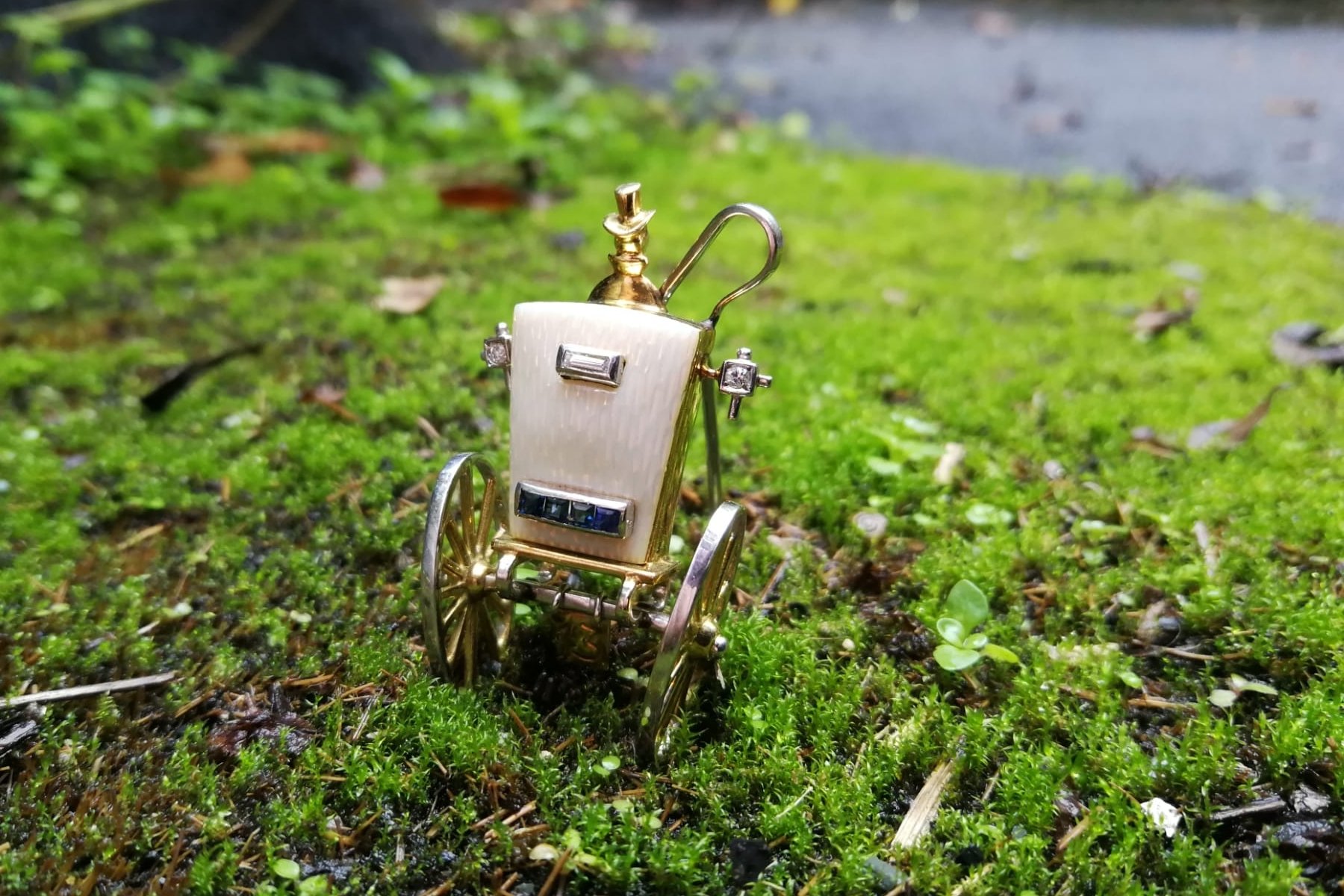 |
Looking forward to whatever road lying ahead, this Italian Fifties 18K gold carriage built in Mellerio style has the ability to carry you to any gala you could ever imagine.
As your fairy godmother, Adin promises that the coach won't change into a pumpkin, so even after midnight you can count on these white gold wheels to take you away in this yellow gold frame with diamonds and sapphires embedded in whimsical opaline enamel as the white gold lanterns light your path. However, the driver's got a mind of his own, being a former horse as you know.
Adin Vintage Jewellery Presents:
Another Arty Farty Picture
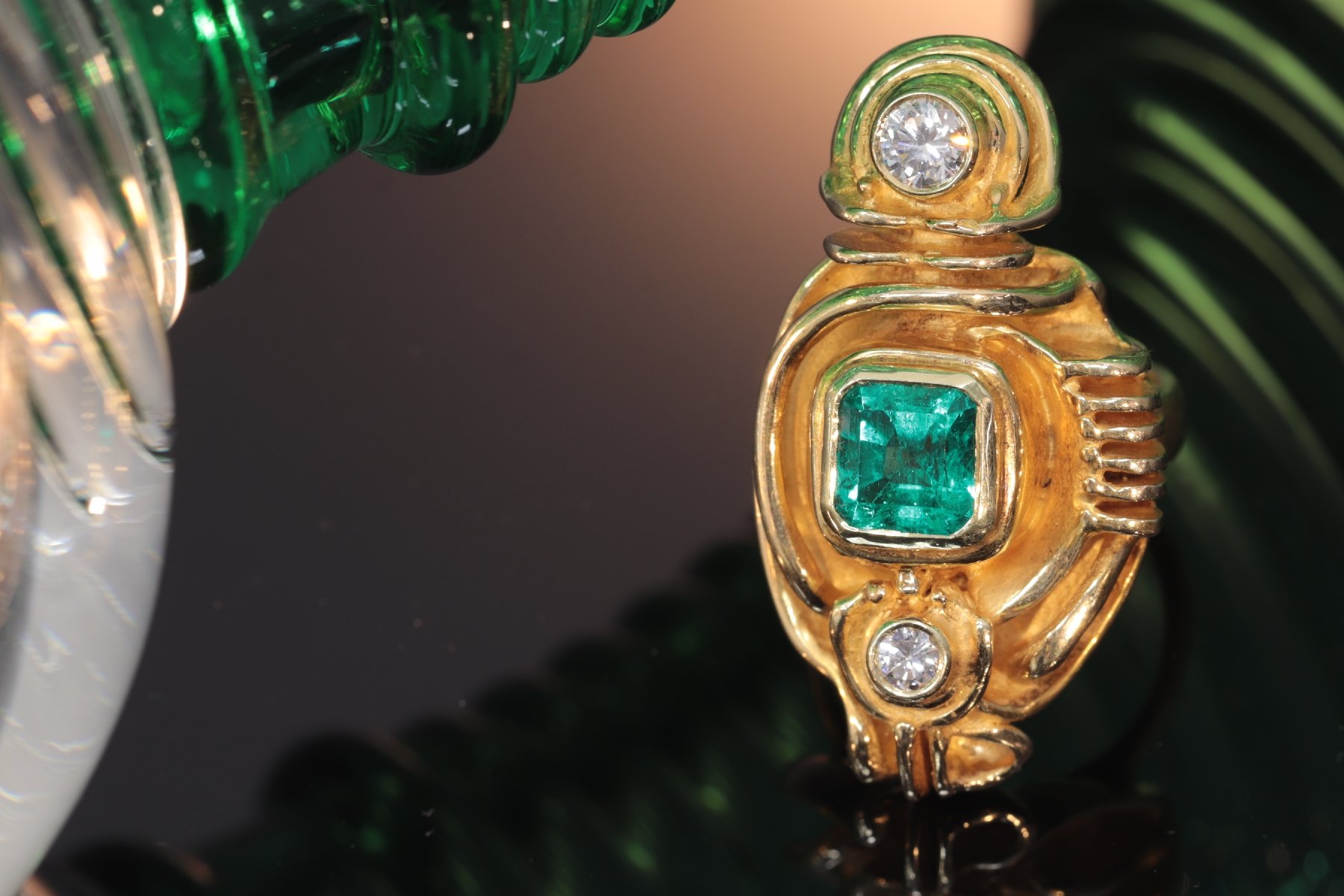 |
Fernand Demaret
(Namur, Belgium 1924-2013)
Fernand Demaret's ambition was to resume the job of his grandfather watchmaker until one day in 1954 when he met Madame Liliane Nathalie Mosselmans. She asked her best friend André Lami to create contemporary jewellery which inspired Fernand Demaret to turn to his style. His first shop (1963) was first located rue du Bailli 10, Brussels and was moved in the 70's the prestigues Avenue Louise 31 in Brussels until its closure in 1992.
With his wife Liliane and many colleagues like Claude Wezelle, Bernard Francois, Jean Pierre Laloux and others created the jewels in the for him so specific style. After 1992 when the store closed, they continued in his showroom located 31 rue Bosquet, Brussels until his death in 2013.
Adin Vintage Jewellery Presents:
A diamond topper!
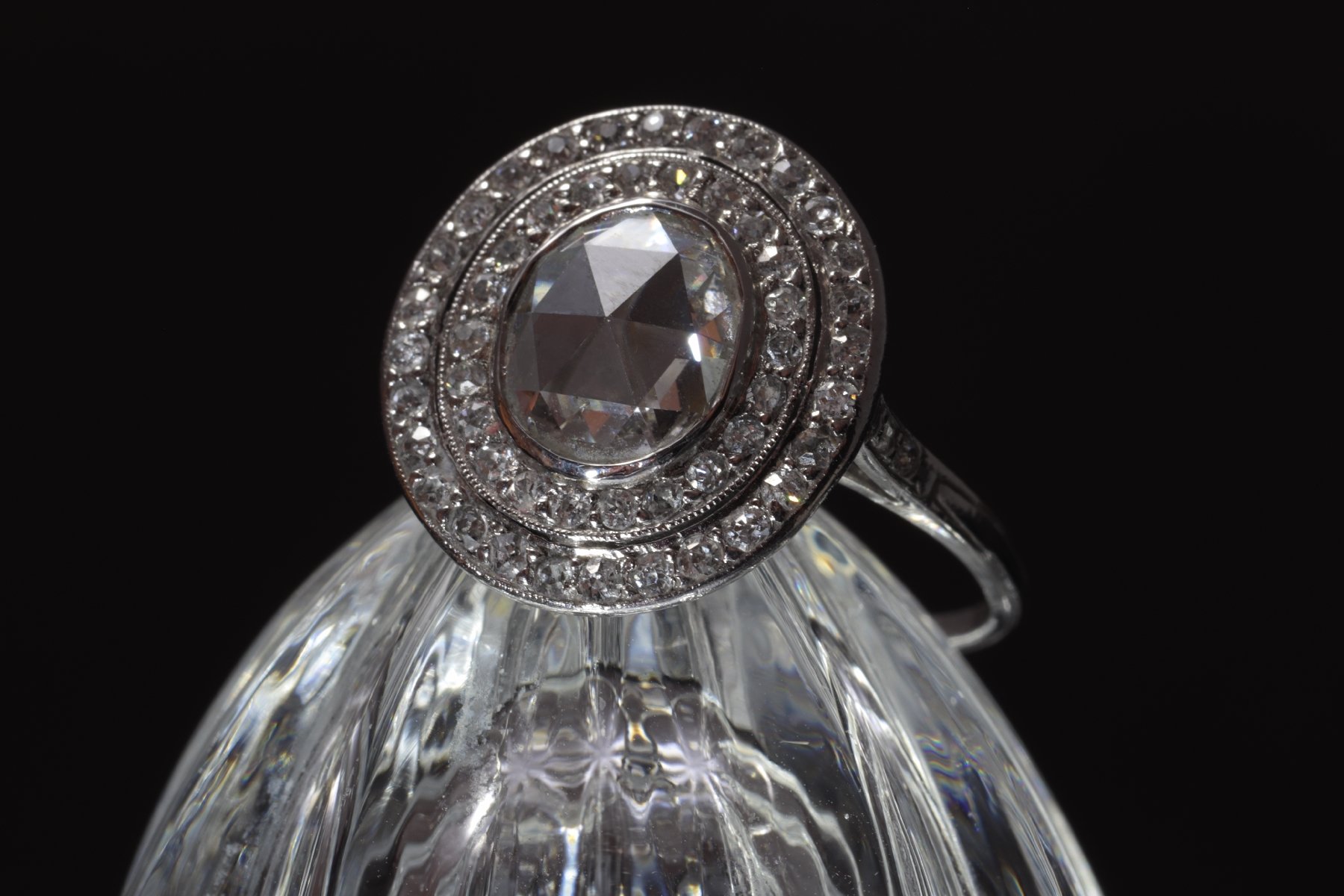 |
The Garden of Adin Antique Jewellery Presents:
A Vintage Seventies Corum watch with a twist.
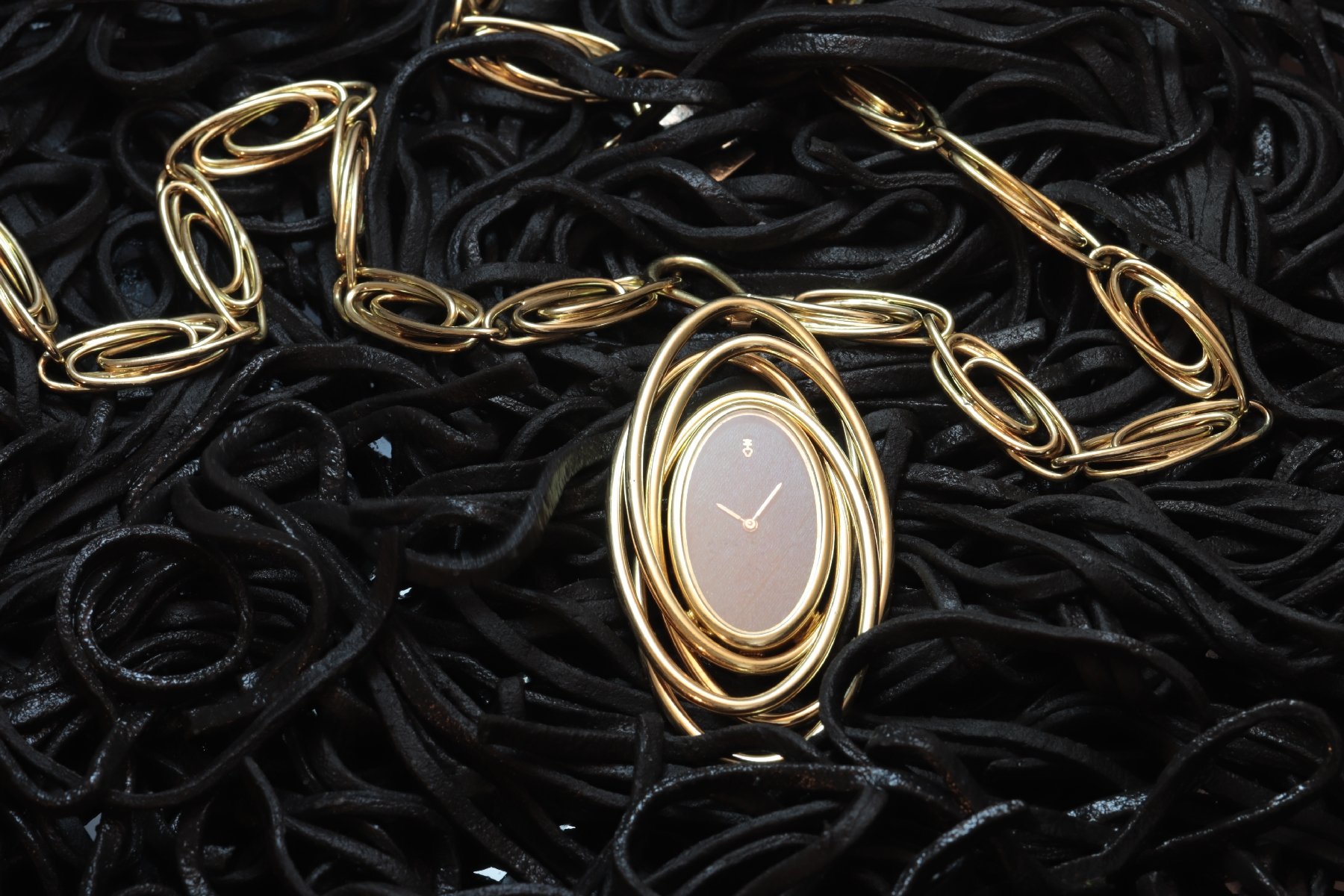 |
Adin Presents:
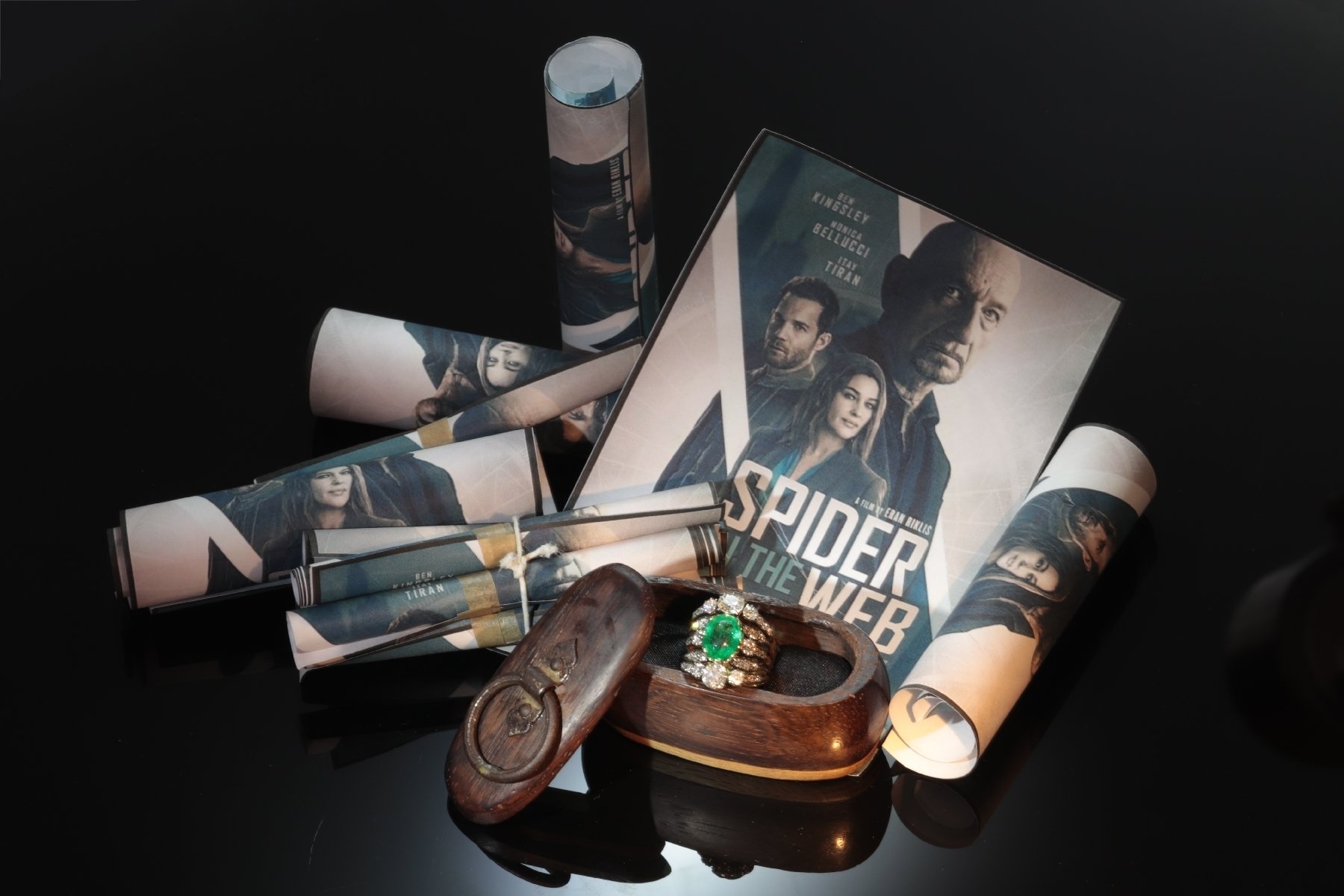 |
Adin Antique Jewellery presents this astonishing Victorian ring starring in Eran Riklis' thriller 'Spider in the Web' alongside Sir Ben Kingsley and grande dame Monica Bellucci.
Often before, Adin received the honour to be the supplier of props for international movie productions, but it's truly a premiere that one of our antique jewellery pieces plays the key role in the story line. A ring as the lead role, a real hero prop, are you intrigued yet?
After keeping this famous jewel on hold during the production period for about one and a half year until the movie's world premiere at the end of August and the beginning of September 2019, we can now finally reveal its splendour and character to all of you.
The true eye-catcher of this Victorian ring is a 3.50crt oval cut emerald in an 18K yellow gold setting, vertically aligned with 2 old European cut diamonds. This starry centre is surrounded by 34 dazzling diamonds, which are set in silver and radiate over five gold shoulders on each side.
King or Queen
We all look nice in pink.
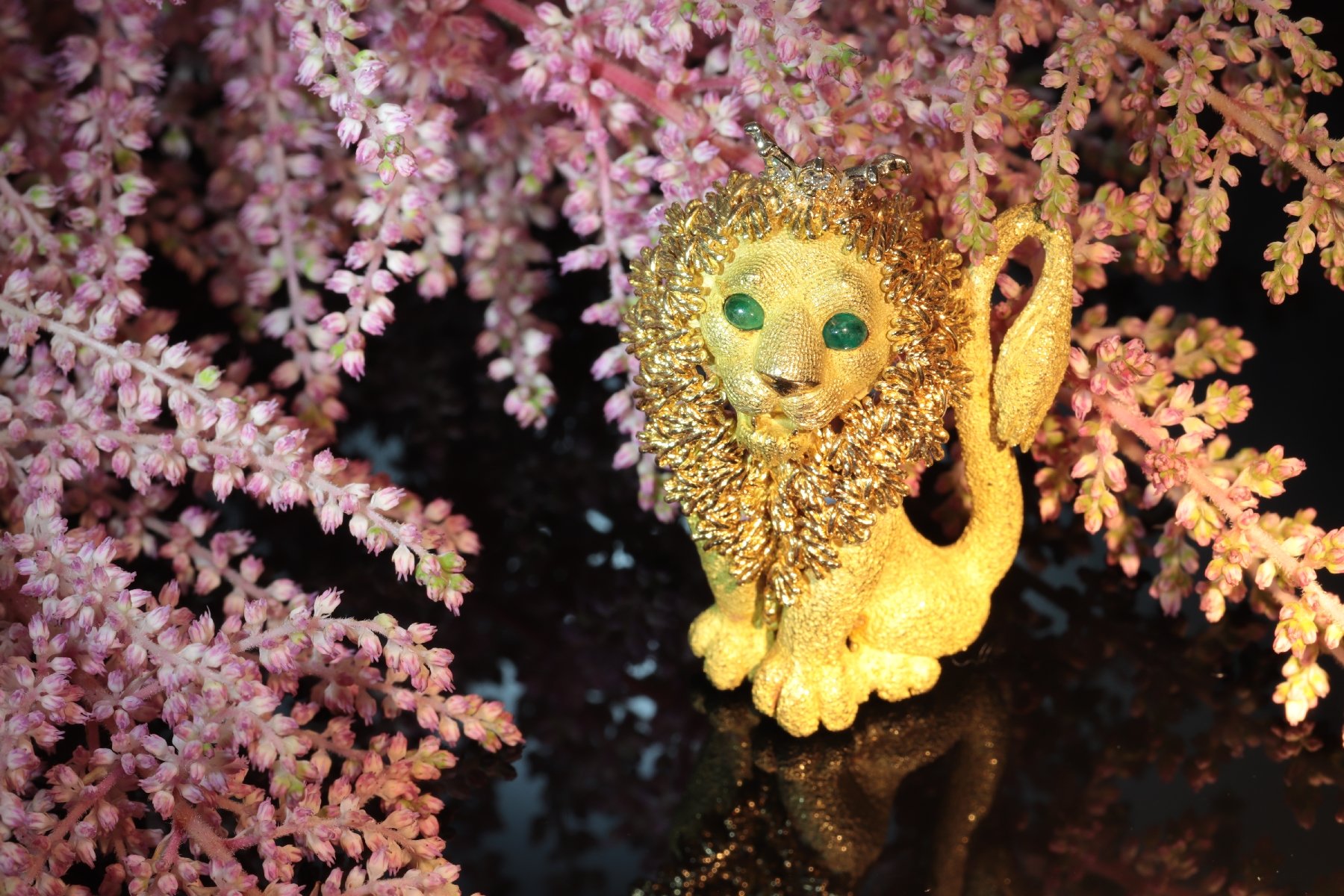 |
Heat Wave In the Garden of Adin:
Cool Vintage Art Deco Jewellery
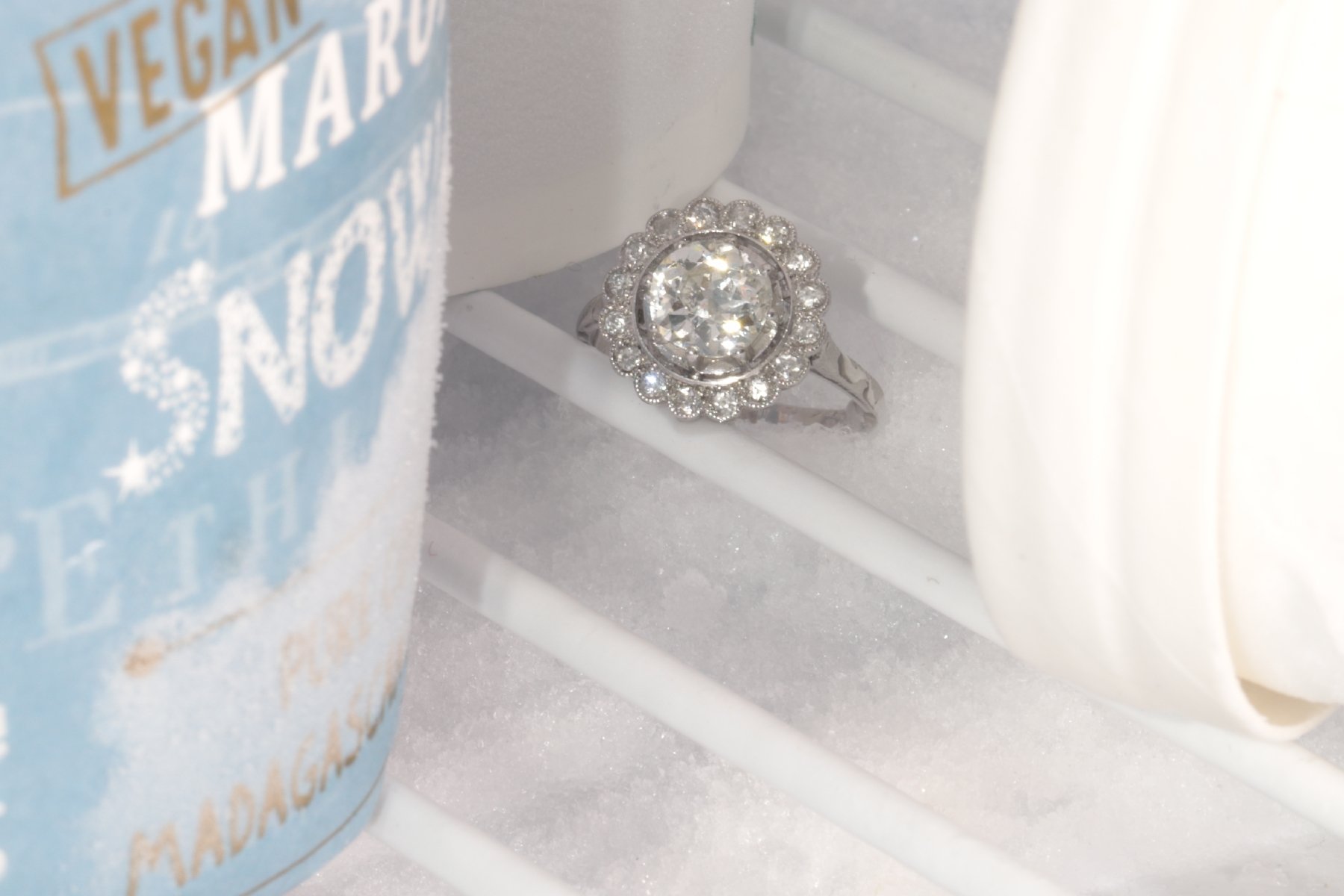 |
Now In the Garden of Adin:
Purple Pleasing Portables with Subtle Scents
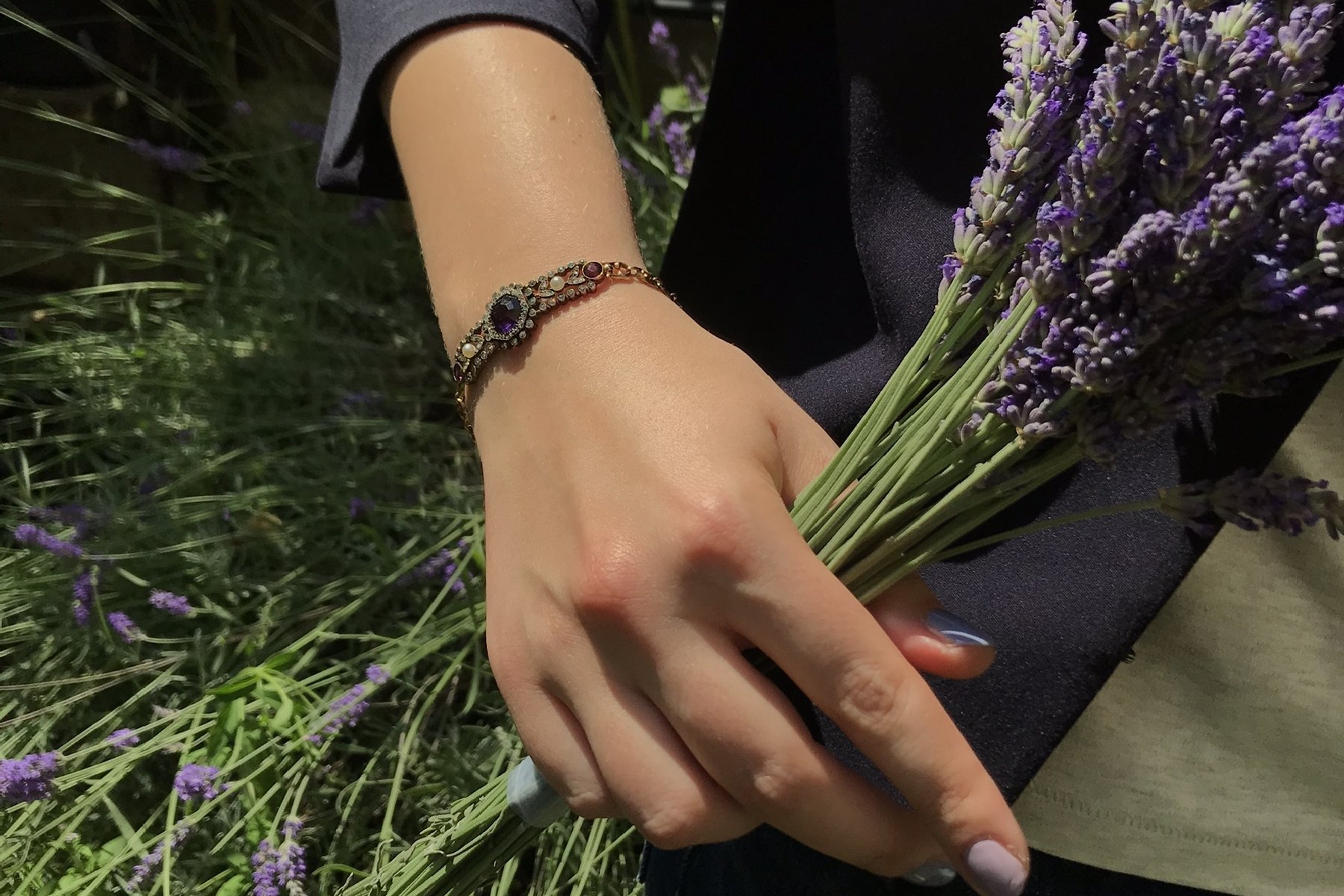 |
In the Garden of Adin
Peculiar Poppies Popping Up With Pleasant Phantasies
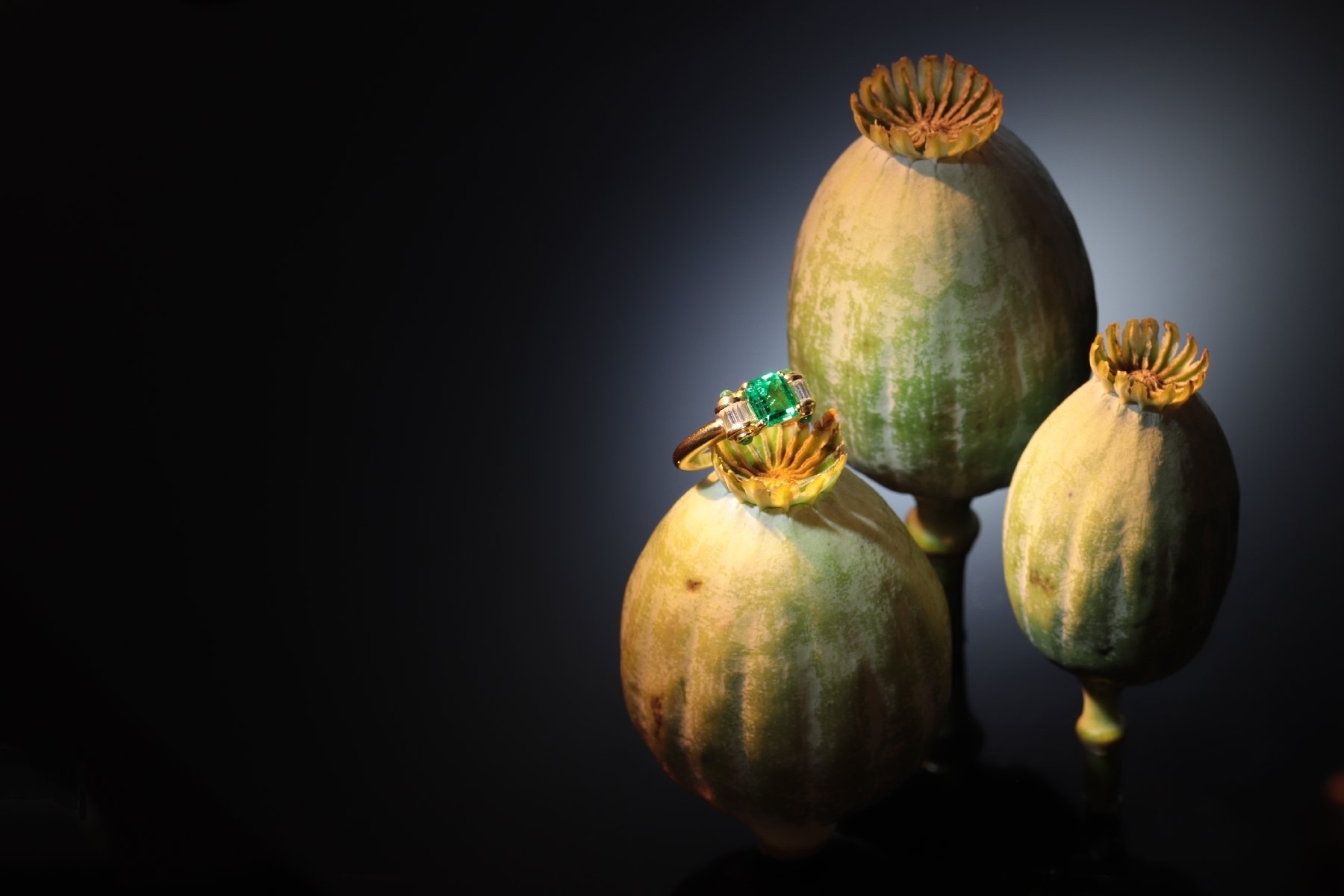 |
In this refined 18K yellow gold Estate engagement ring, the natural Colombian emerald emanates its verdant green colour over both diamond scrolls on its left and right side. Four diamonds railset in each scroll curl up around a centre beginning and ending in a cabochon cut emerald.
Rest assured that the mesmerising deep green of this emerald will lure you in as if you're under a spell. And who knows of which faraway dreamlands its diamond scrolls tell exciting bedtime stories.
The Garden of Adin
Where summer is the default state of mind!
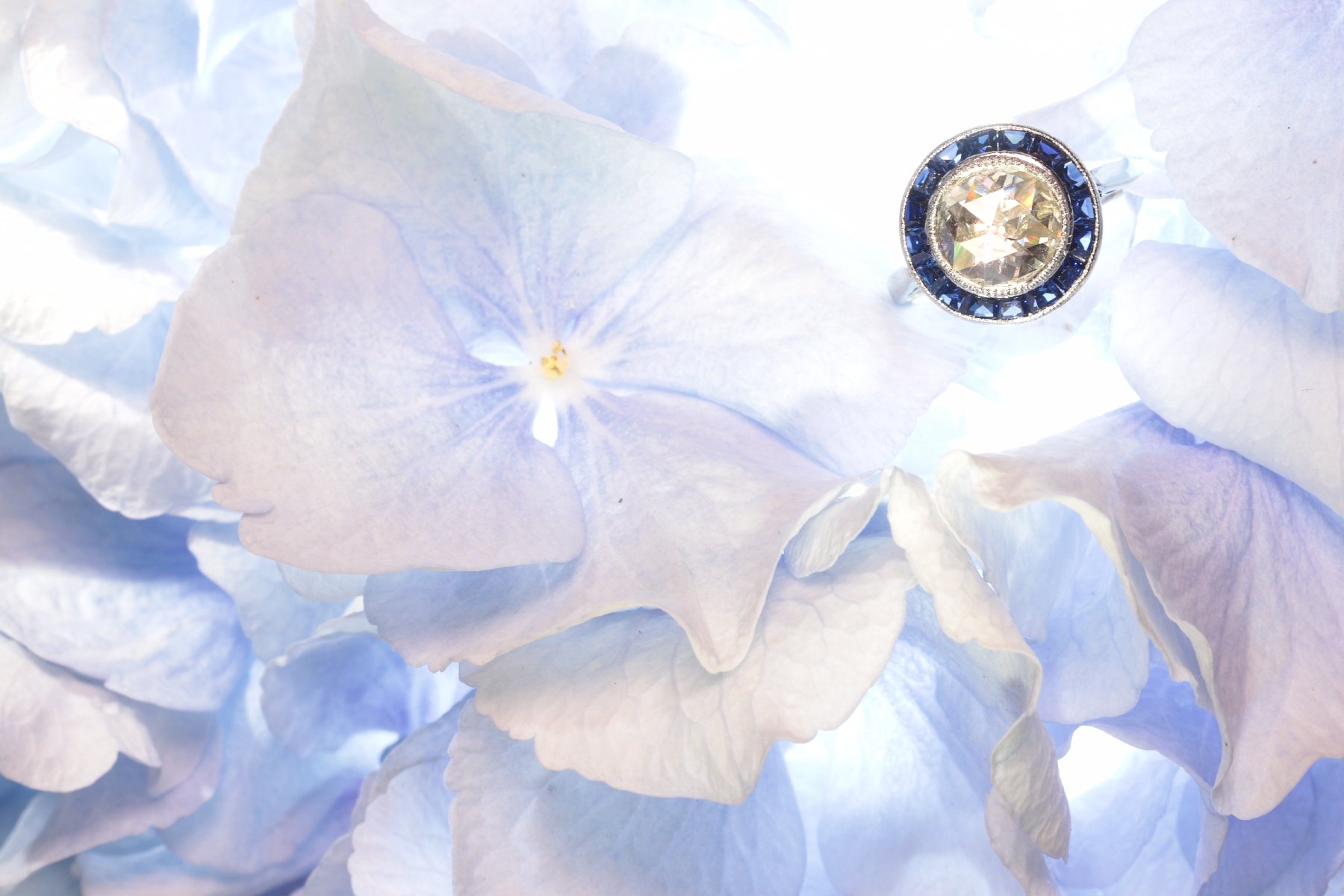 |
A time for reflection in The Garden of Adin
Vanitas vanitatum, omnia vanitas
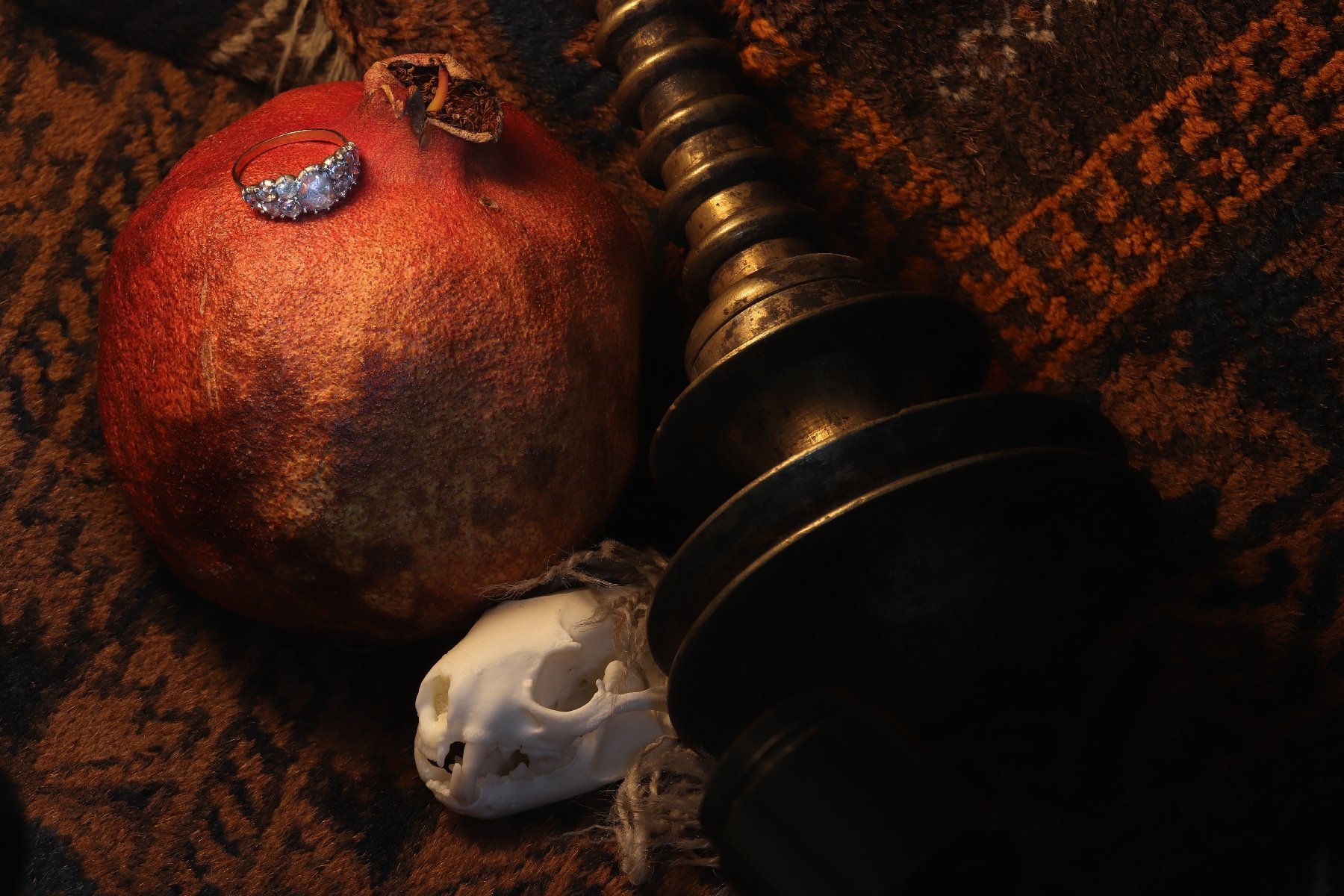 |
Bird spotting in The Garden of Adin
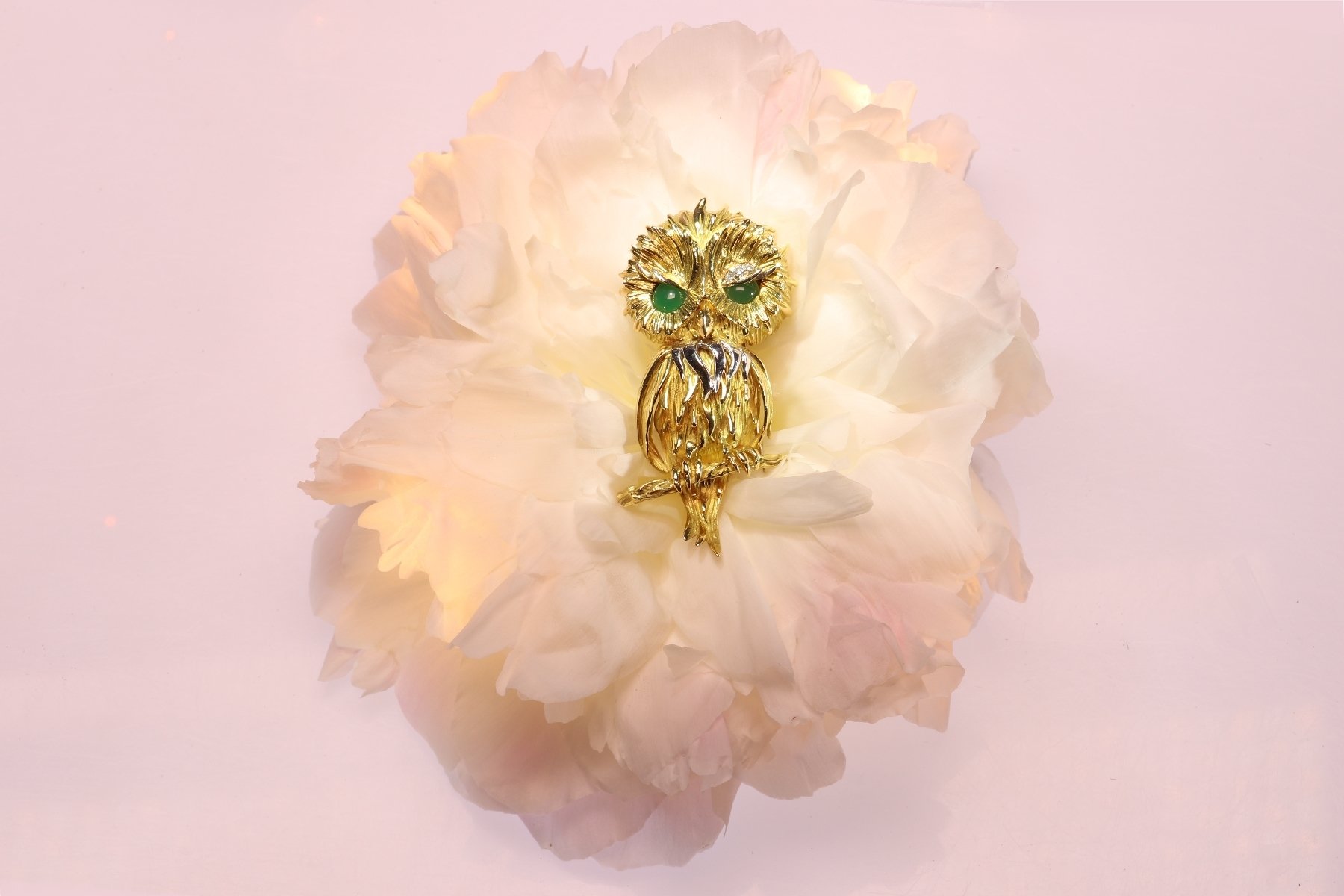 |
Once in a while, the Garden of Adin is honoured by the presence of a rare 18K bicolour gold Fifties owl coming all the way from France. The one we’ve spotted just recently has even got green cabochon cut agate eyes, diamond eyebrows and white gold collar feathers. But specifically his expression is what really makes us wonder: What does this spirit of wisdom see what we can’t see while he’s gazing through the garden?
One thing is for certain, whoever is chosen to have this patient life guide on her or his shoulder, he or she would definitely be able to mesmerize any opponent.
Buzzing around in The Garden of Adin
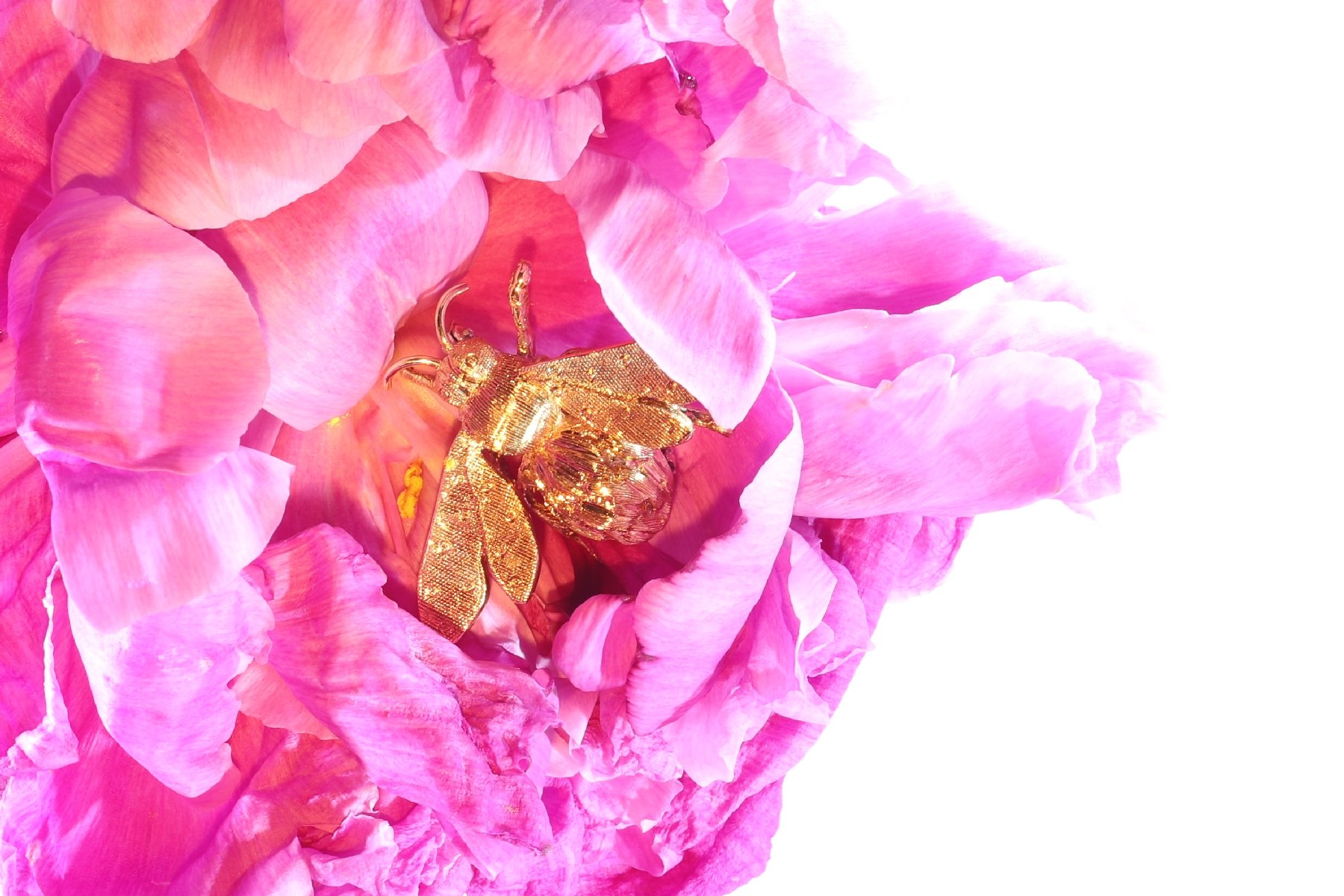 |
Each spring, a whole variety of flowers and fruits blossom in the Garden of Adin. To discover to which force of nature we owe this wide range of beauty in our garden, we stood on the look-out for hours. All of a sudden, we noticed this 18K gold bumblebee busy buzzing from bud to bloom.
Once you've seen her stunning yellow gold patterned engravings lively shimmering in the warm sun, you can't keep your eyes off of her. That's when it hit us: our garden wouldn't be the same without this little worker brooch that came flying over all the way from Italy.
We're already looking forward to which exotic flower this bumblebee will tumble on next.
The Garden of Adin Proudly Presents:
16th Century Old Dutch Still Life
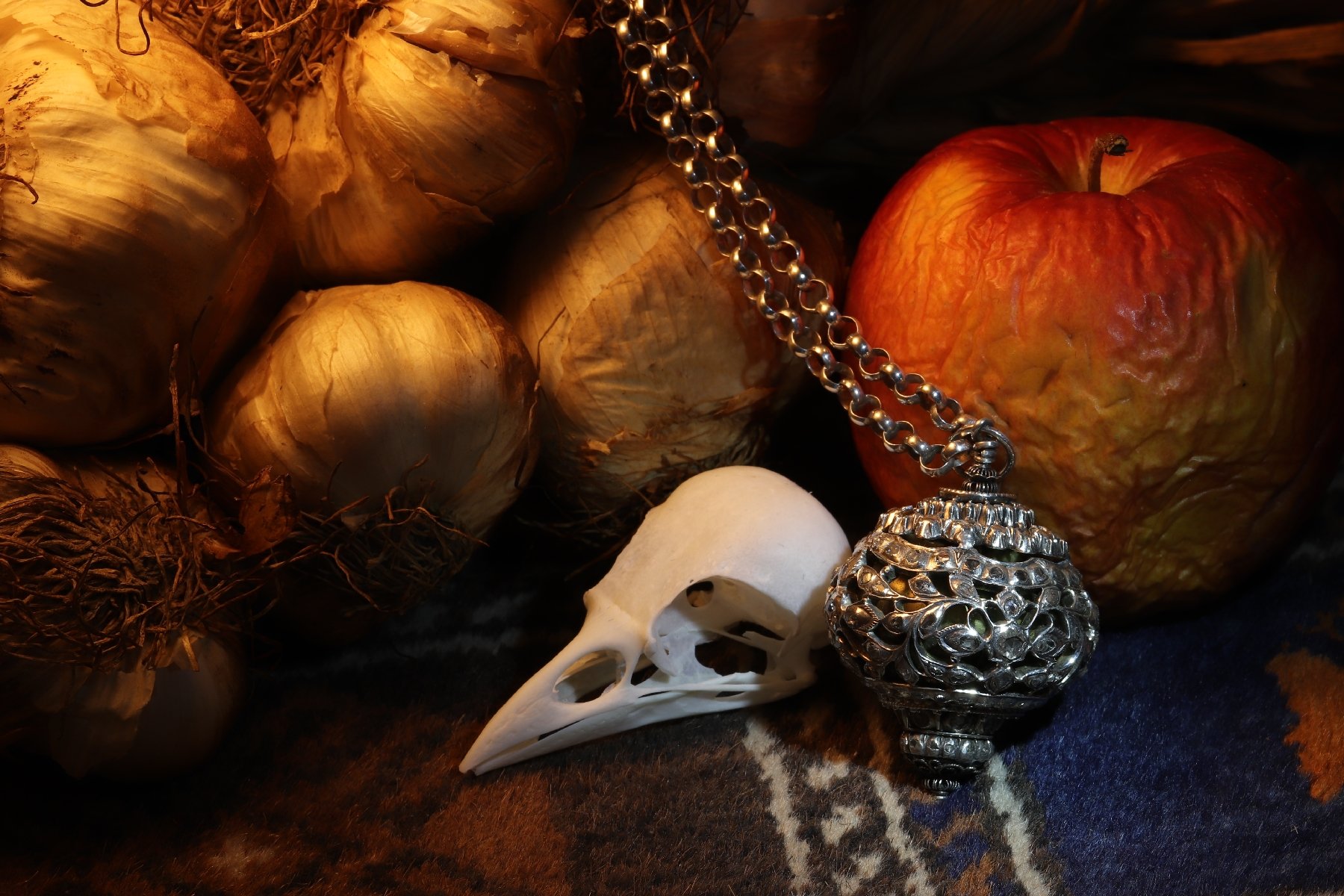 |
The Garden of Adin Proudly Presents:
Baroque ring from around 1700
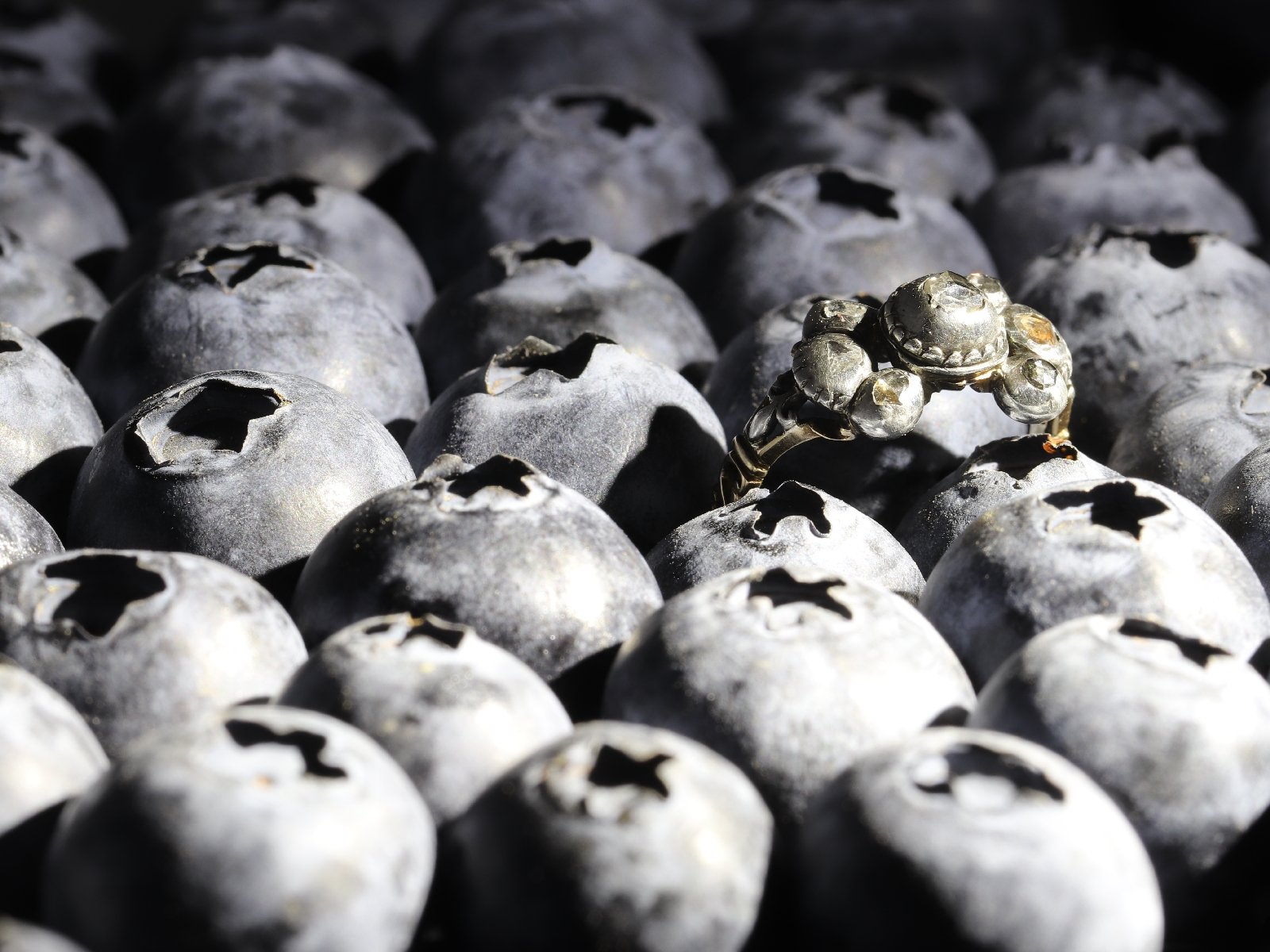 |
This 18K yellow gold Late Baroque ring from around 1700 behaves just like a looking glass. Once you start looking at this, you keep on finding new wonders as if you've entered a whole new world!
Your eye gets drown in by the bow-shaped silver top constructed out of seven domes with rose cut diamonds. Deeper you fall when you spot the little engravings in three of these domes and in the central gold backing. Then suddenly, the French lilies and open work in the shank attract your gaze.
Many have gone down this path and got lost in this ring's craftmanship and elegance. Well, we don't consider being at a wonderful place through a mesmerising jewel as being lost…
The Garden of Adin Proudly Presents:
A mixture of Art Deco and Belle Époque!
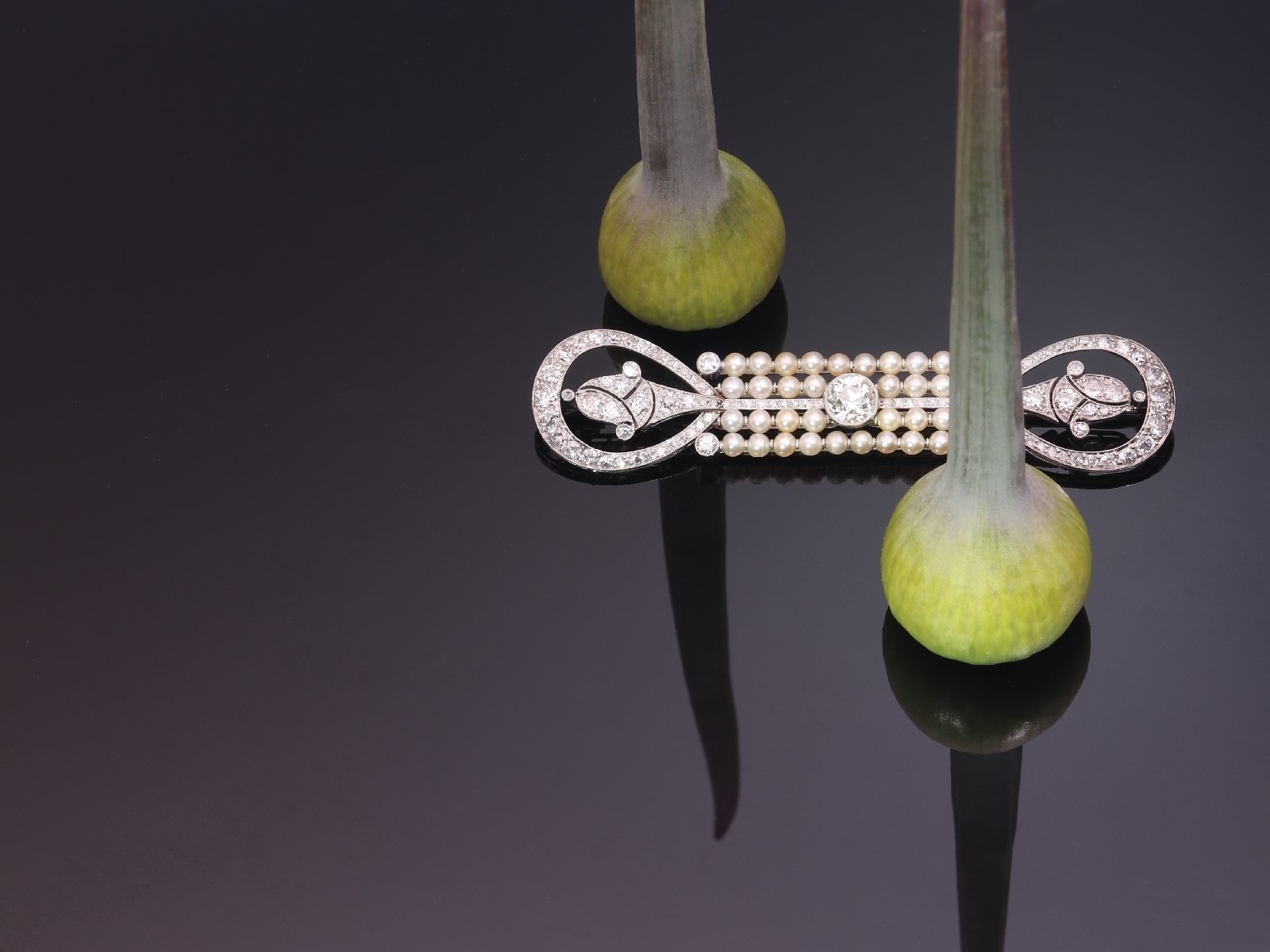 |
Look what came peeping out from between the flora in the Garden of Adin: this dazzling platinum bar brooch from around 1920. We admit it: this beauty seems to be a late bloomer as it only started budding out this time of the season. We realise that time is very much of the essence in our society, but here at Adin we appreciate the expression in the slow sense.
Oh and how it was worth the wait for this jewel's 105 diamonds and 36 pearls designed with a mixture of Art Deco and Belle Époque features! We know that even if it isn't for right now, you may just grow in love with this antique piece and suddenly pop up at our shop for your perfect match.
The Garden of Adin Kindly Invites you:
Please visit @AdinAntiqueJewellery at Instagram
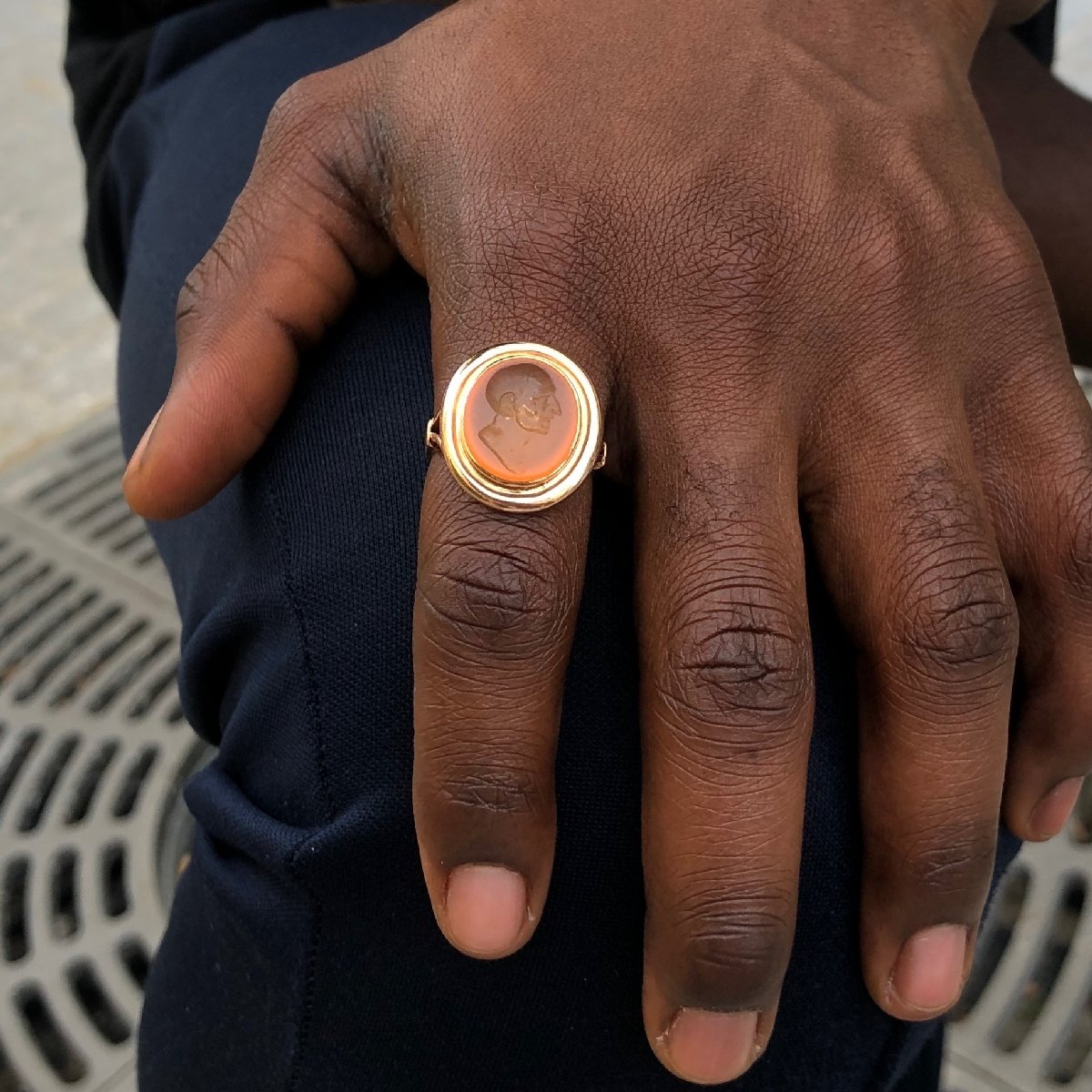 |
The cornelian with an intaglio engraved male profile of this Pre-Victorian 18K yellow gold ring from 1820 shows to be a true Imperial jewel that embodies standing and style completing any gentleman's allure.
We'd be honoured to be your source of inspiration for your season of shine! Quite literally: we kindly invite you to check our @AdinAntiqueJewellery account at Instagram.
The Garden of Adin Kindly Invites you:
Please visit @AdinAntiqueJewellery at Instagram
 |
These 14K yellow gold Dutch Victorian chandelier earrings from 1860 gleam through a constellation of three filigree dangling universes. With these almost otherworldly perfected jewels, we're fully groomed for the sunlit days and the starry nights of summer.
We'd be honoured to be your source of inspiration for your season of shine! Quite literally: we kindly invite you to check our @AdinAntiqueJewellery account at Instagram.
The Garden of Adin Presents:
Why is this apple different from all other apples?
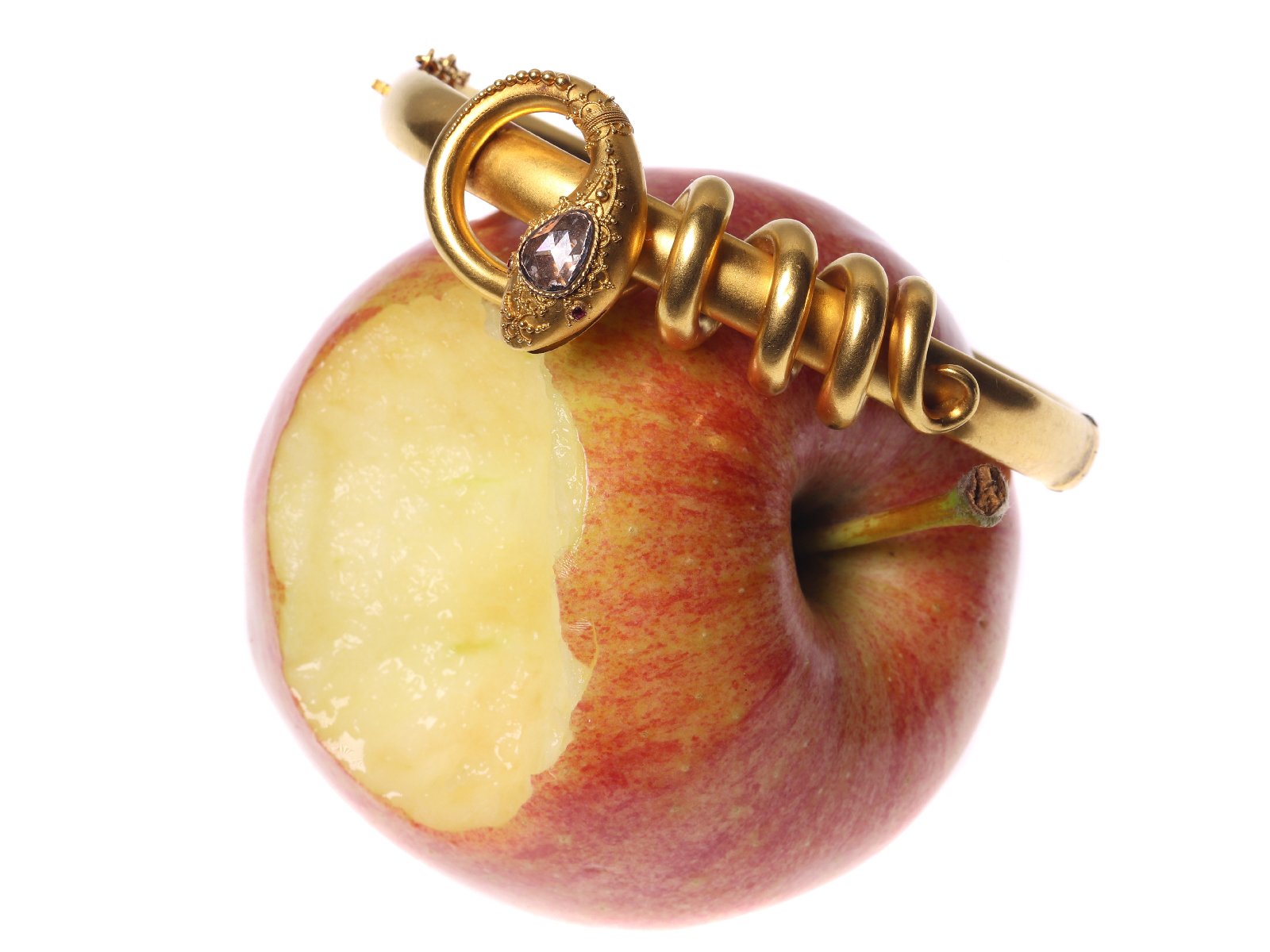 |
Ever since our Gardener has created the garden at Adin as it is now, he has developped a remarkable eye; he knows his quality antique jewellery from any other jewellery. Often, he walks with our visitors on the edge of his wondrous world, but he never shows anyone the centre of his creation.
Out of our human curiosity, we ventured out to see for ourselves what wells of jewellery wisdom and what treasures of trinkets and truths our Gardener was keeping for himself, right there at the centre of the Garden of Adin. What we've discovered, is only a toothy snake solidified into this 18K gold Victorian bracelet in such a position as if he's enjoying an apple.
Now, we do must admit that its warm yellow glow, ruby eyes, diamond crown and filigree skin pattern have definitely seduced us into wearing it on our own wrist. Other than that intriguing gold creature, we don't know what's all the fuss about: it certainly couldn't be the ordinary apple.
The Garden of Adin Presents:
...in mint condition
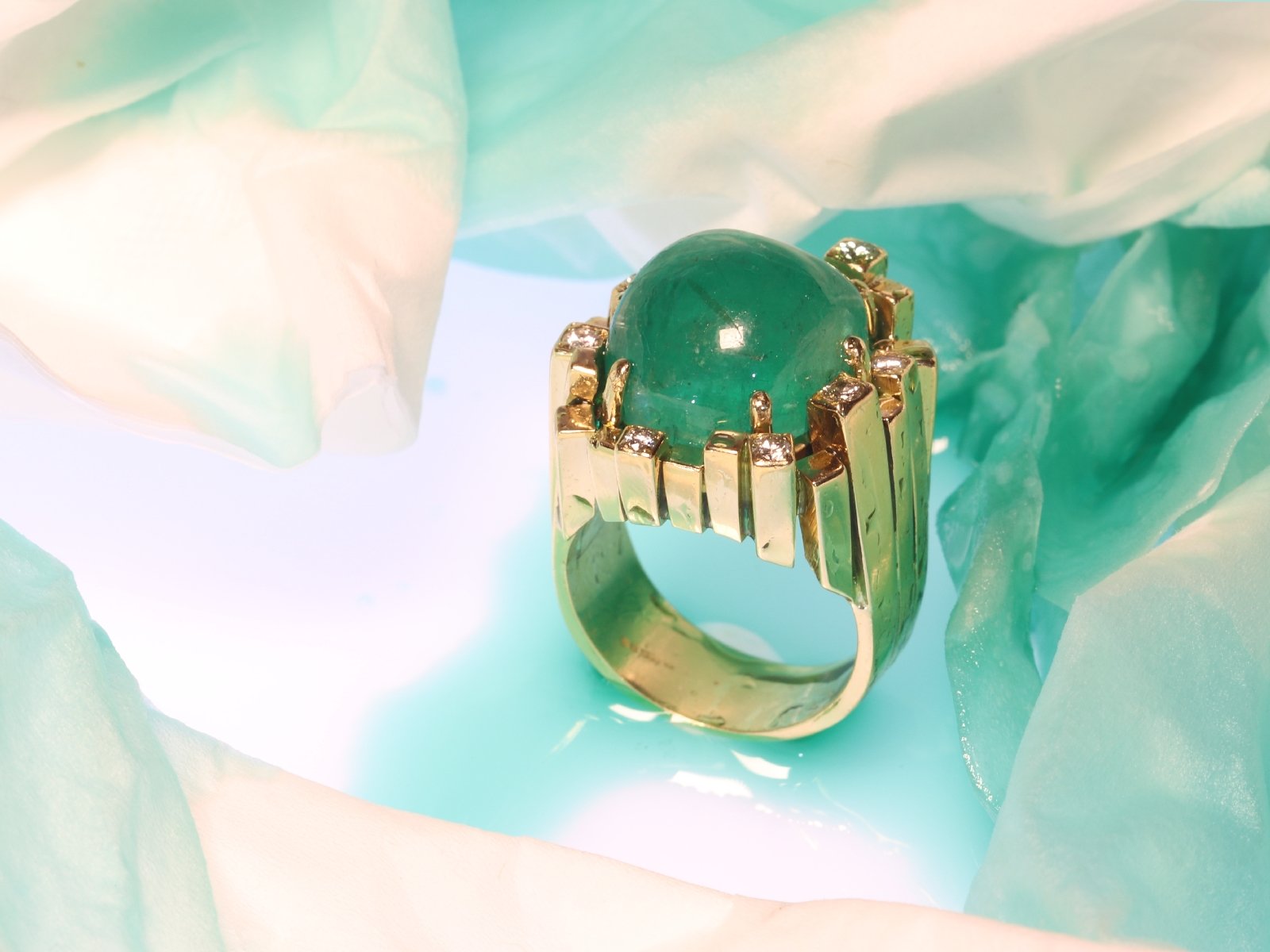 |
With its mint fresh green emerald, this British Modernistic 18K yellow gold ring from the Seventies is just the perfect precious piece to welcome spring back into your home.
The 10+ carat evergreen cabochon centre is surrounded by cubic pillars of gold that arise from the ring's shank. Eight of these pilasters are even topped off with a brilliant cut diamond, shimmering as dewdrops in a grassy meadow.
Can you see yourself enjoying the warmth of the first sun of the year, with that first lemon-mint-cucumber cocktail of the season finished of by this design bedizenment, because we can!
The Garden of Adin Presents:
The triumph of Priapus
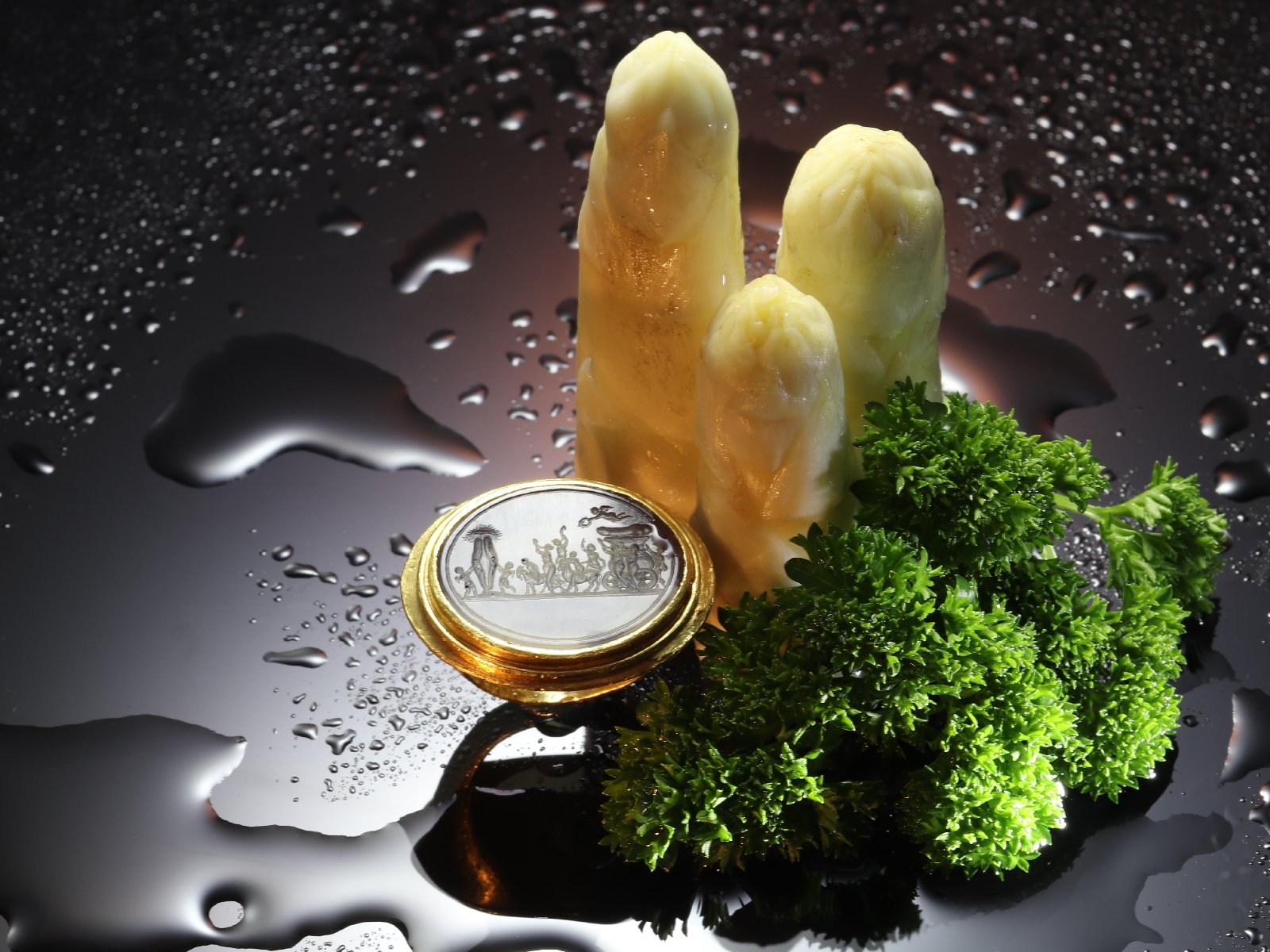 |
Gold 18th Century erotic neo-classicistic intaglio ring:
"The triumph of Priapus"
A classy 18th Century ring with an image that, once you understand what you're looking at, makes you giggle. The image is known as "The triumph of Priapus" and we even found some 18th century drawings with this scene belonging to The British Museum. As far as we have been able to determine, only a few of these rings with this scenery are known to exist. We were lucky enough to find a very interesting thesis (2011) from Raimon Graells i Fabregat in where he dives fully into the history of this ring.
In Greek mythology, Priapus was a minor rustic fertility god, protector of livestock, fruit plants, gardens and male genitalia. Priapus is marked by his oversized, permanent erection, which gave rise to the medical term priapism. He became a popular figure in Roman erotic art and Latin literature, and is the subject of the often humorously obscene collection of verse called the Priapeia.
For more info on this intriguing ring, follow this link.
The Garden of Adin presents:
Lovers....
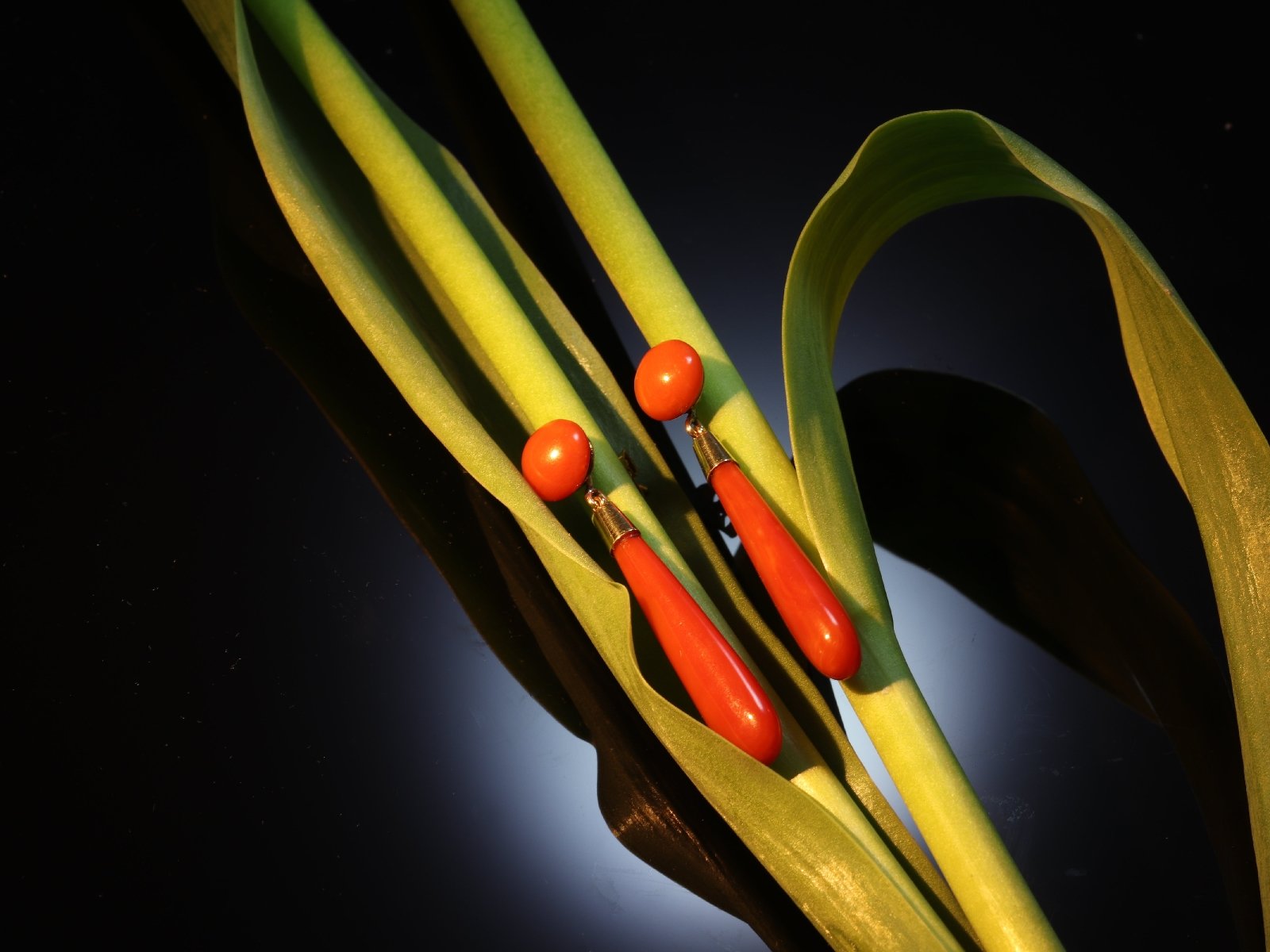 |
Lover it's immoral
But why quarrel, with our bliss
When two lips of coral
Want to kiss
(from: "Lover" by Ella Fitzgerald)
The Garden of Adin is going bananas:
With this modernistic signed Demaret brooch
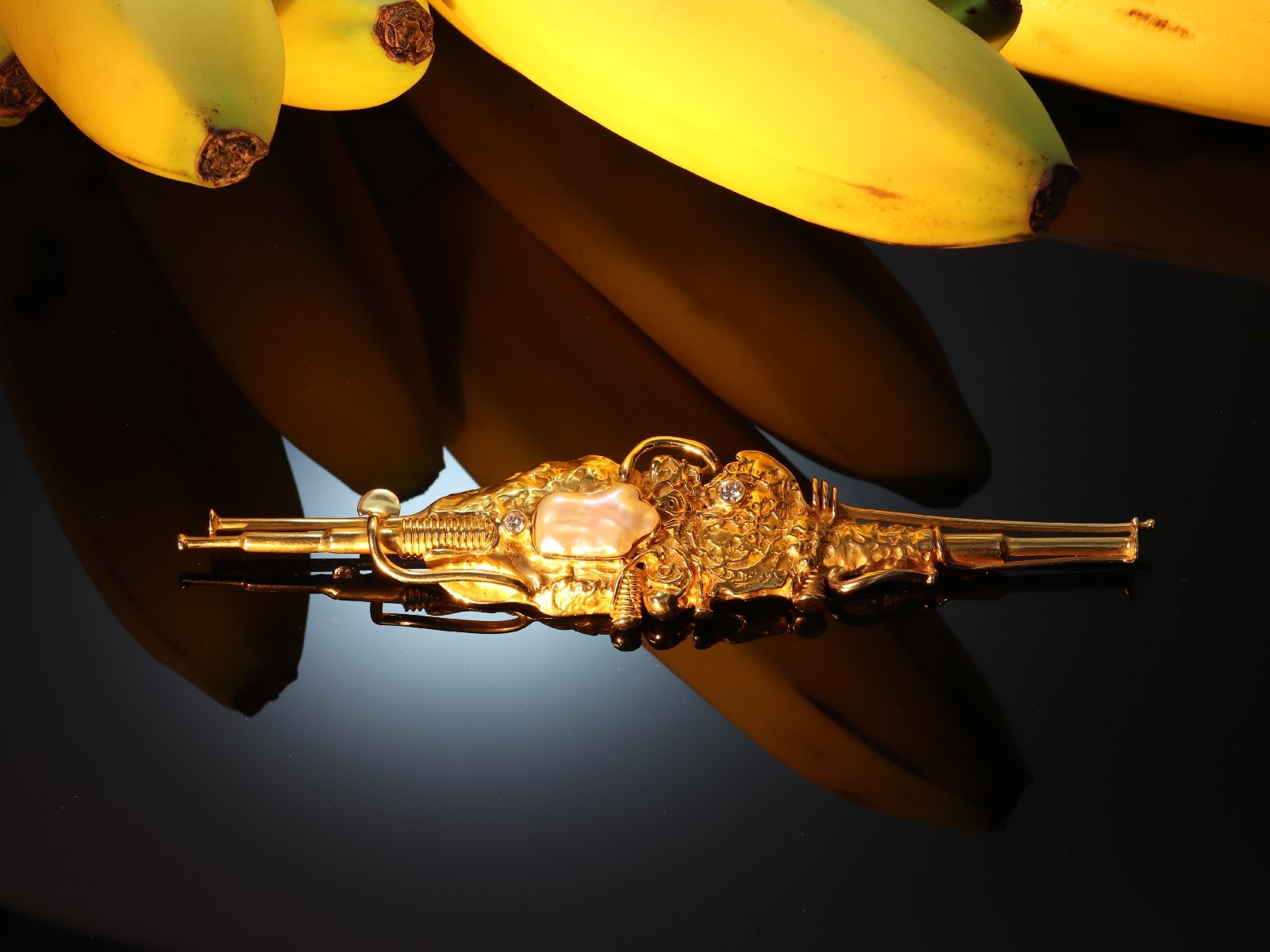 |
We all know already that you can discover an excellent collection of antique jewellery at the Garden of Adin. Now, you can also witness how everyone there goes fully bananas for this modern 18K yellow gold art piece by Belgian jewellery artist Demaret (1924-2013).
Since the 1960's, Fernand Demaret is considered a pioneer in modern jewellery art and more importantly in commercialising it. By using the lost wax technique, he was able to combine different elements into an abstraction while still creating a baroque style. True to the Demaret signature, this artistic composition is subtly touched up with two brilliant cut diamonds and a baroque pearl. And so every seemingly mechanical component and organic abstraction becomes more than a work of art: it truly becomes part of a jewel.
Furthermore, this brooch is rather of architectural dimensions beyond regular proportions, even for a Demaret. Even the more reason why this large piece of art jewellery ticks all boxes of being part of the jewellery world as well as the art world. Wouldn't you go bananas over this?
The Garden of Adin presents:
Cartier Vintage Fifties Trembleuse Brooch
Flower that opens/closes
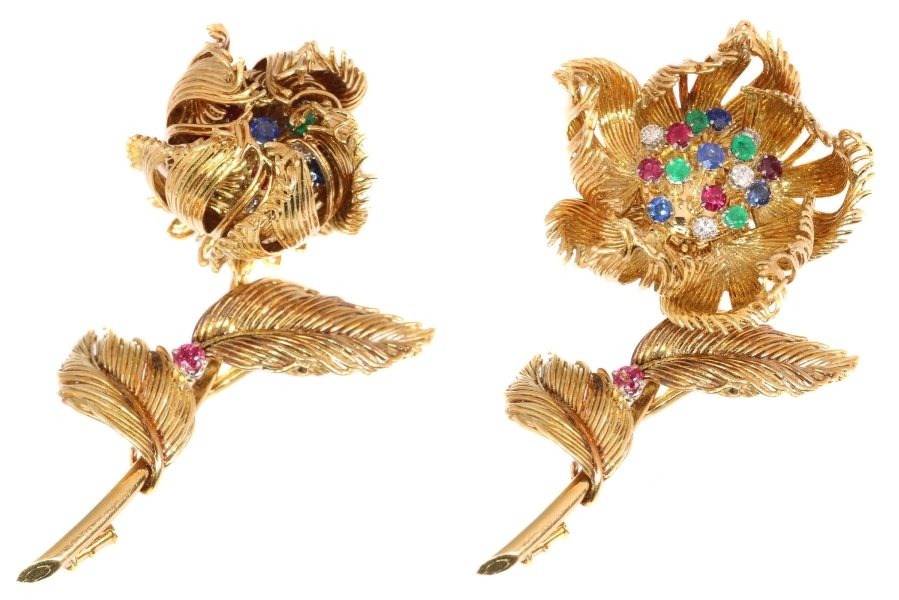 |
While unfolding the five petals of gold gauze, a trembleuse heart of diamonds, sapphires, rubies and emeralds arises from this Fifties 18K yellow gold flower brooch signed by Cartier.
With all its colour and gimmickry, this meticulously crafted statement piece can portray your every mood. Wear it with the flower wide open, and let your own magnificence radiate through the flickering gems as they jitter on top of their stems with every move you make. Or wear the flower as a closed bud and present a more mysterious and timid character full of promise with the potential of blossoming.
Oh who are we kidding, this Cartier piece doesn't need our humble words. Let it speak for itself and you will see that this striking jewel simply fulfills everything one desires from any occasion.
The Garden of Adin presents:
Huh? Dog teeth in Jewellery?
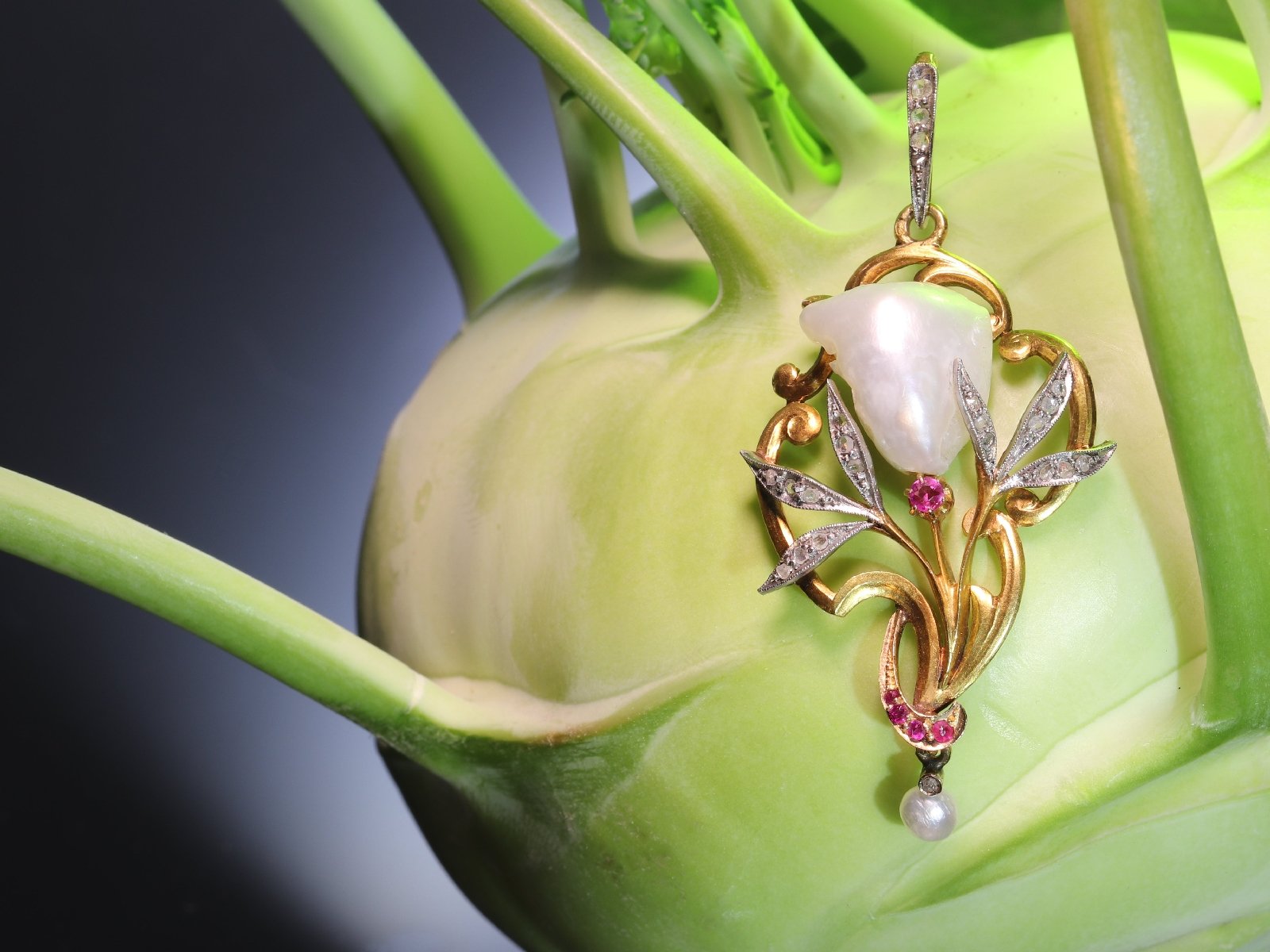 |
The type of pearl (the big one) used in this French Art Nouveau pendant is most likely a fresh water pearl from either the Mississippi or Tennessee river. These specific irregular shapes are called dog tooth.
The Garden of Adin presents:
Going back to my roots
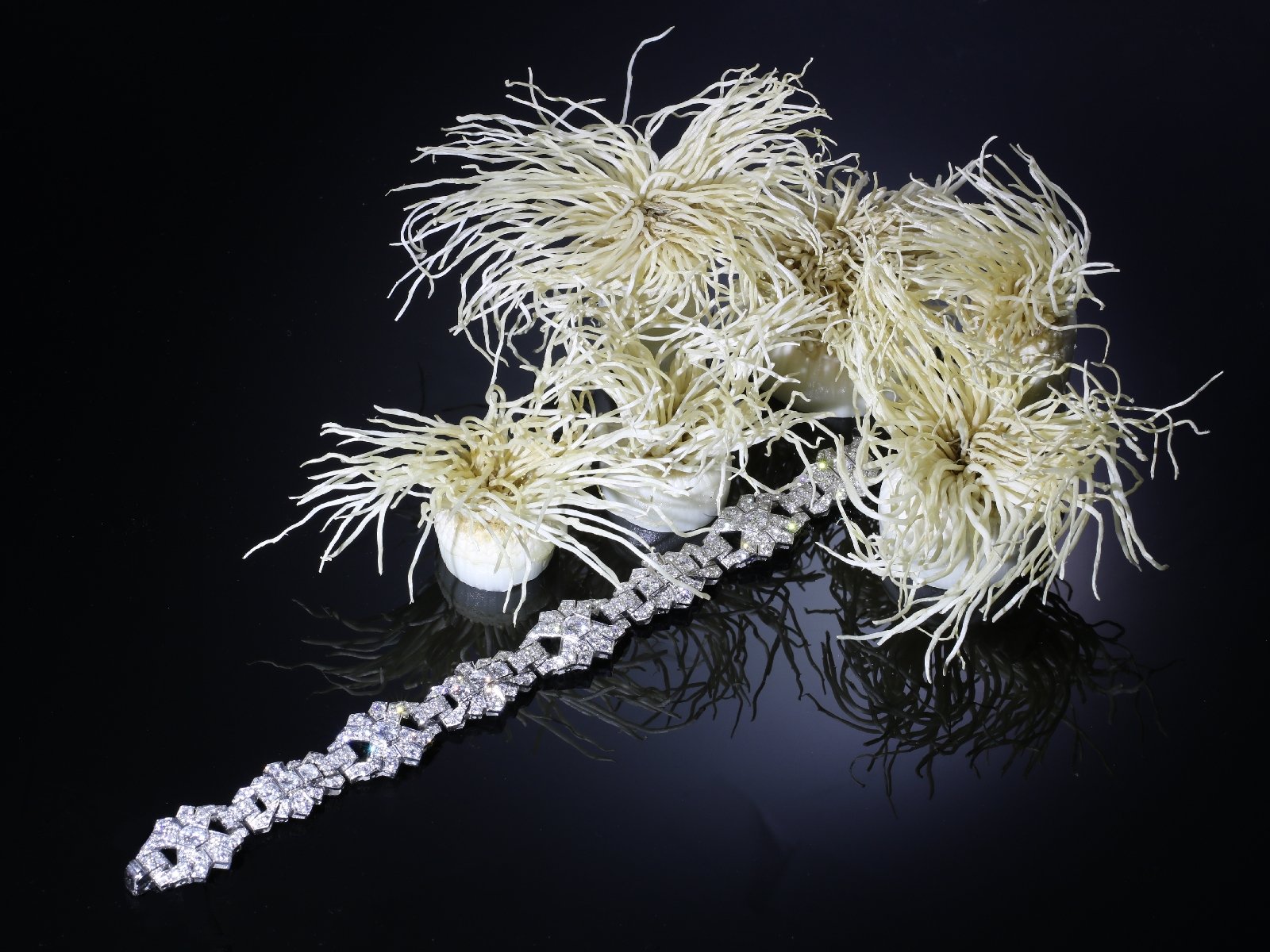 |
Adin Fine Antique Jewellery
Imagine:
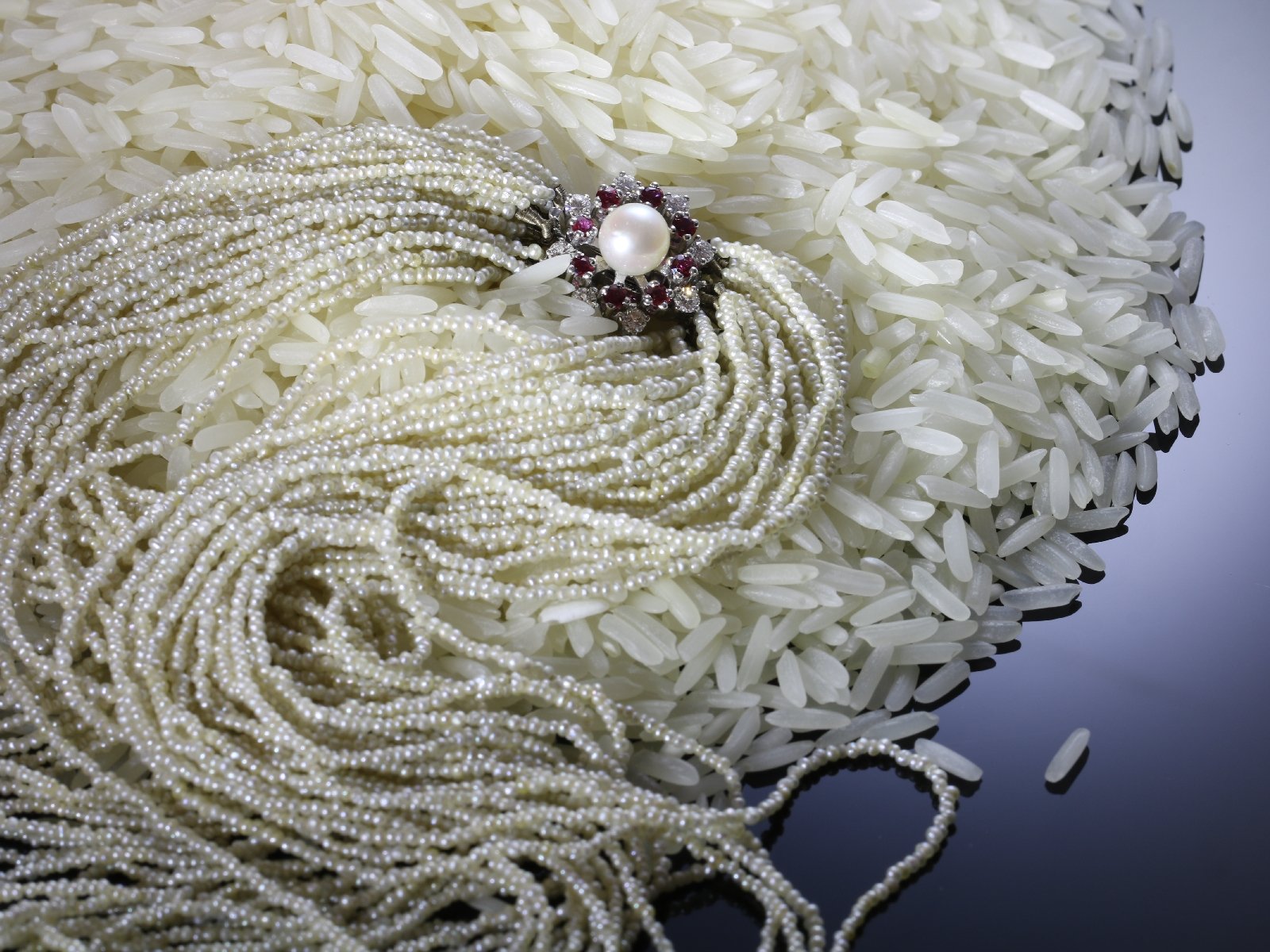 |
Imagine:
late 19th century, early 20th century
Imagine:
pearl divers
Imagine:
opening oysters
Imagine:
some oysters have pearls, some don't
Imagine:
some oysters have big pearls, some small
Imagine:
some oysters have very small pearls
Imagine:
collecting the approx. 13.000 pearls needed for this necklace
Imagine:
drilling these 13.000 pearls
Imagine:
stringing these 13.000 pearls
Imagine:
just how many hands each pearl has passed
Imagine:
that these strands of pearls had a closure made somewhere in the early 20th century
Imagine:
that somewhere in the Fifties someone decided to take off the original closure and to replace it with a contemporary Fifties closure
Imagine:
the many times in it's life span of approx. 100 years these pearls have been worn
Imagine:
what they have seen
Imagine:
where they have been
Imagine:
they can be yours :-)
Recipes d'Amour by Adin Fine Antique Jewellery:
Carat Soup!
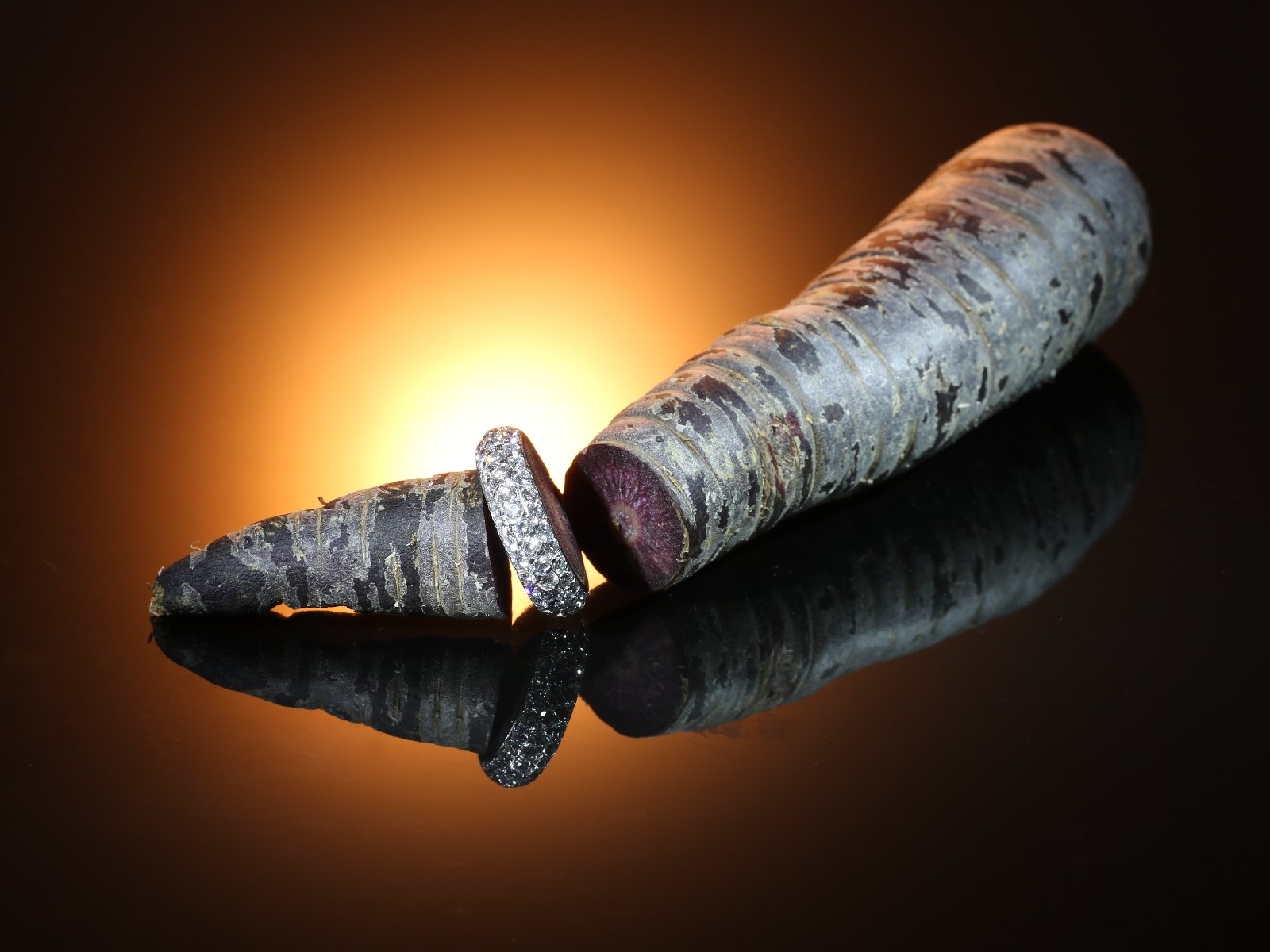 |
La nouvelle cuisine d'Adin
proudly presents:
Carat Soup
Ingredients:
One Adin vintage eternity band (check Google for the rest of the ingredients)
Method:
Put on the ring before you start cooking, then check Google how to proceed.
Reason for the ring in this recipe?
Why not? Any reason to wear antique and estate jewelry is a good one.
Click here for all our antique jewelry that can be worn during cooking.
The Garden of Adin presents:
Spicy Valentine Love!
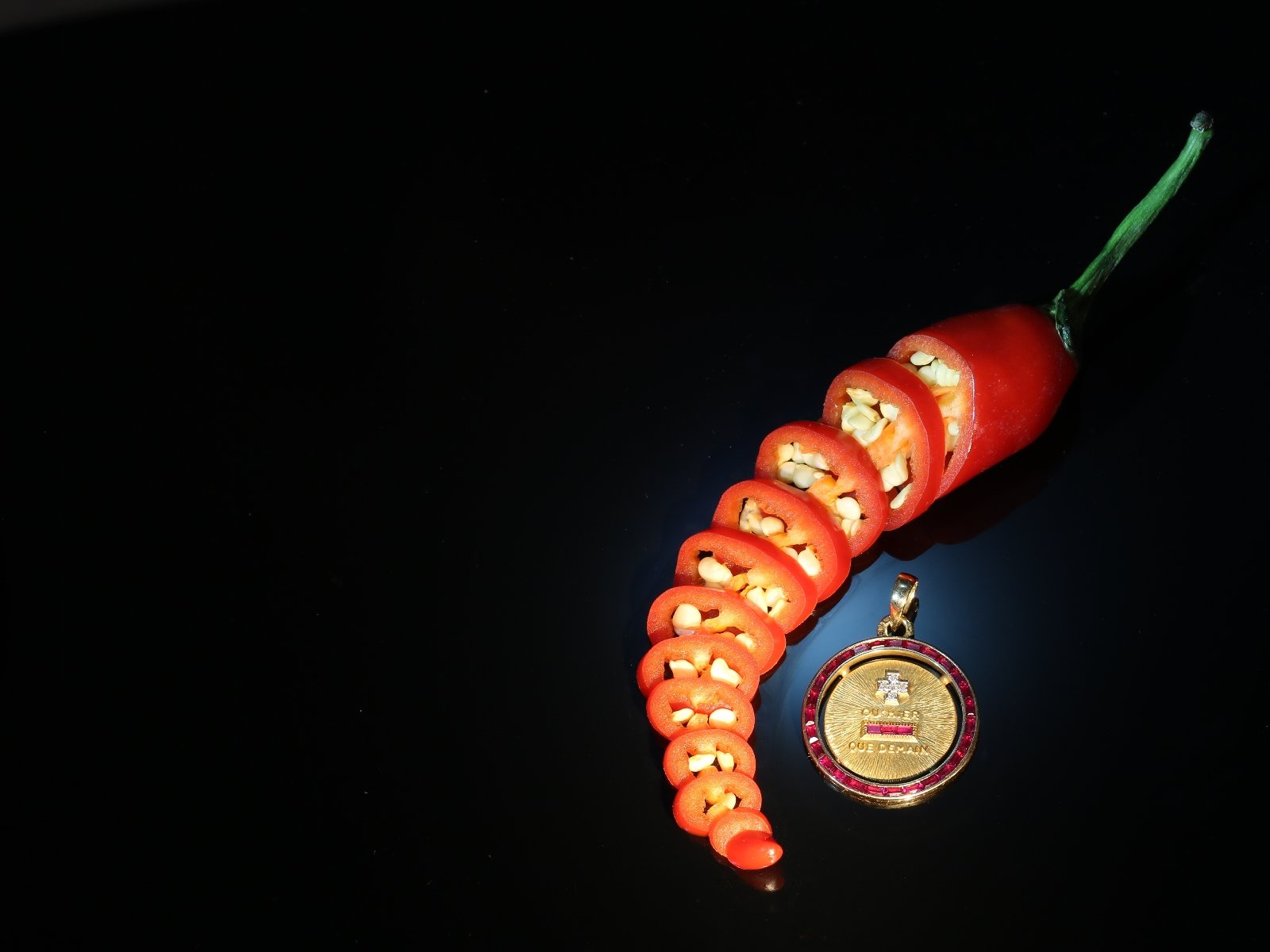 |
This jewel reads: + qu hier - que demain. This is inspired by a beautiful and romantic French poem by Gérard Rosemonde (1871 - 1933) called 'Les Vieux'. It comes from the sentence 'Et, comme chaque jour je t'aime davantage, aujourd'hui plus qu'hier et bien moins que demain' and it means 'And because I love you more and more each day, today more than yesterday but less than tomorrow'.
Awww the French! They do have a way with words...
The Garden of Adin presents:
Mirror, mirror on the wall...
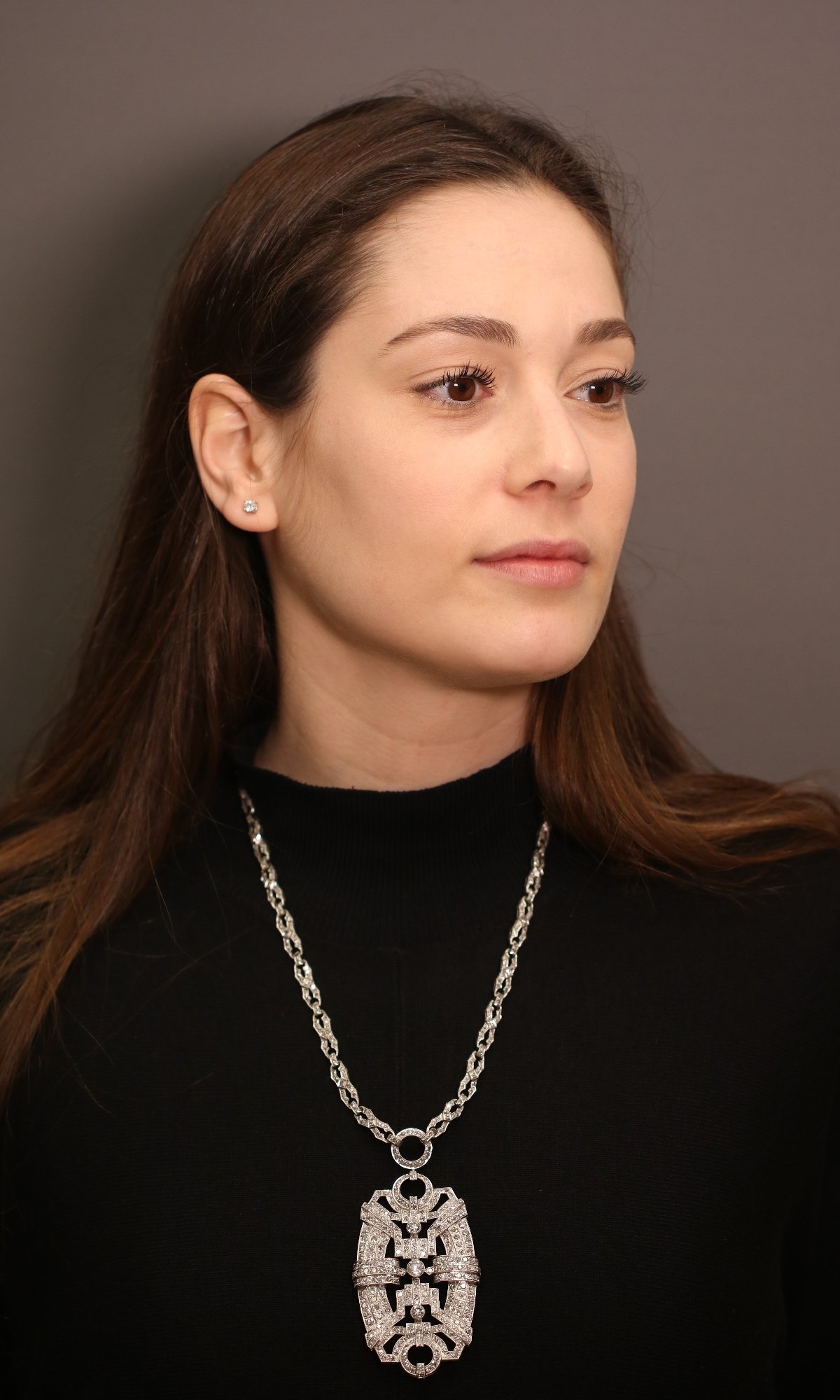 |
For this week's mail, we would like to suggest a simple exercise. All you need to do to prepare yourself, is to literally take a mirror by the hand. If you would like to give it a try, here we go:
First, look at this picture of a young lady and then check out yourself in the mirror that you just took. Look back at the lady on the photo, and then back at yourself again. Now explain to yourself why it would be ok for her to wear an antique piece of jewellery and why not for you?
We notice that some people see the image of their own grandmother when they look at antique and vintage jewellery. Our advice: don't automatically picture someone who generally wears antique jewellery as someone from the same era of that piece. Everyone and everything of any age is so much more than just their age: they're a story, they've got depth. Don't write off that one treasure that has caught your eye and captured your heart just because of its age. Wear it, just because you want to. And wear it bold, because you define the jewel and not the other way around!
Now take a look at the lady on the picture and then in the mirror one last time. Don't you agree that the only bad thing about what you see is that this necklace isn't around YOUR neck?
The Garden of Adin
Antique English Crystal Jewellery:
A passport to other worlds?
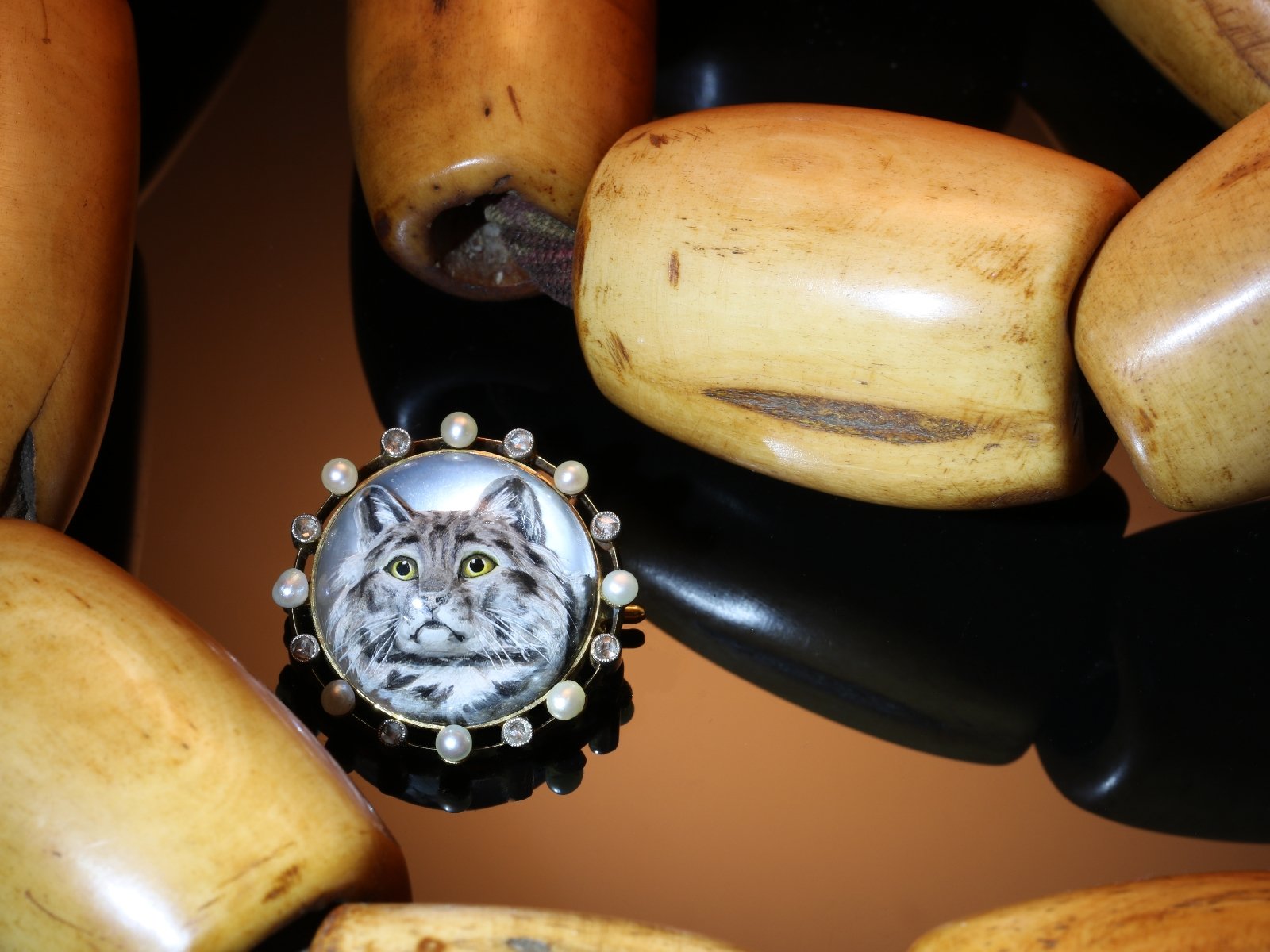 |
Reverse intaglio crystal or English Crystal - A crystal cut in the form of a cabochon, shallow or domes, that is carved in intaglio on it flat back with a motif that is realistically painted in minute detail and is surrounded by a transparent ground. The deeper the carving, the more pronounced the three-dimensional trompe l'oeil effect, which is sometimes enhanced by a backing of thin layer of mother-of-pearl. The carved motif, for pieces mounted in a circular gold band as a tie pin, cuff links, button, or studs for men, was usually a racing horse, game bird or dog, and for pieces in a brooch or a locket for women, a floral design or a monogram; some examples depict an insect or a coaching scene.
The technique was originated by Émile Marius Pradier, of Belgium, c. 1860 (he made the only known-signed example). In England it was developed by Thomas Cook in the early 1860s and carried on by his pupil Thomas Bean and the latter's son Edmund and grandson Edgar (d. 1954).
After the popularity of the pieces in the late Victorian era, the high quality deteriorated by the 1920s, when examples were also being made in France and the United States (some modern pieces depicting motor cars and aeroplanes). The crystals have long been identified with the Hancocks firm. The crystals have sometimes been referred to by the misnomers 'Essex Crystal' or 'Wessex crystal', owing to the erroneous assumption that they were decorated c. 1860 by the enamel portrait painter William Essex (d. 1869).
Imitations have been made of carved and painted glass, and even of a glass cabochon above a printed paper design.
The Garden of Adin
Antique Moonstone Jewellery:
A passport to other worlds?
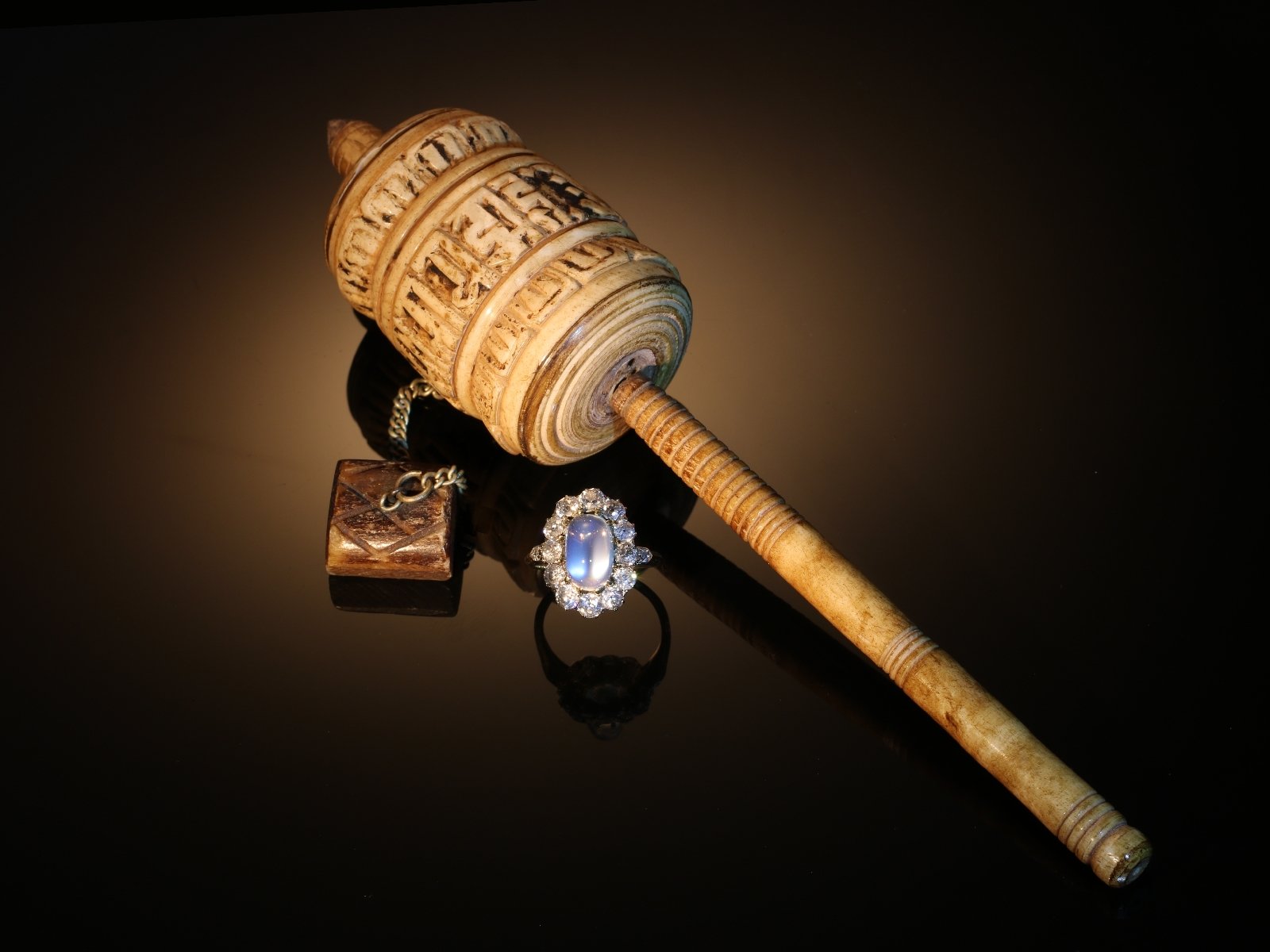 |
As their name suggests, moonstones have been associated with the moon over various cultures and ages due to their typical milky bluish effect and white reflections reminiscent of the full moon shining through a veil of clouds.
With its appearance, man has attributed the same gifts of the moon to moonstones. As the moon renews itself monthly, so would moonstones retain youth, restore broken love and improve fertility. As the moon influences the tides, so would moonstones protect against stormy waters. Legend even has it that the ever-changing blue and white lustre of a moonstone is a sign of a beneficent spirit dwelling within.
It's clear that a lot of history and lore hides within this gem. But of course, no need for any excuse to purchase a charming ring with a moonstone as its center. And yet, it wouldn't hurt to give it a rub to see if a genie pops out, would it?
The Garden of Adin
Vintage Jewellery:
A passport to other worlds?
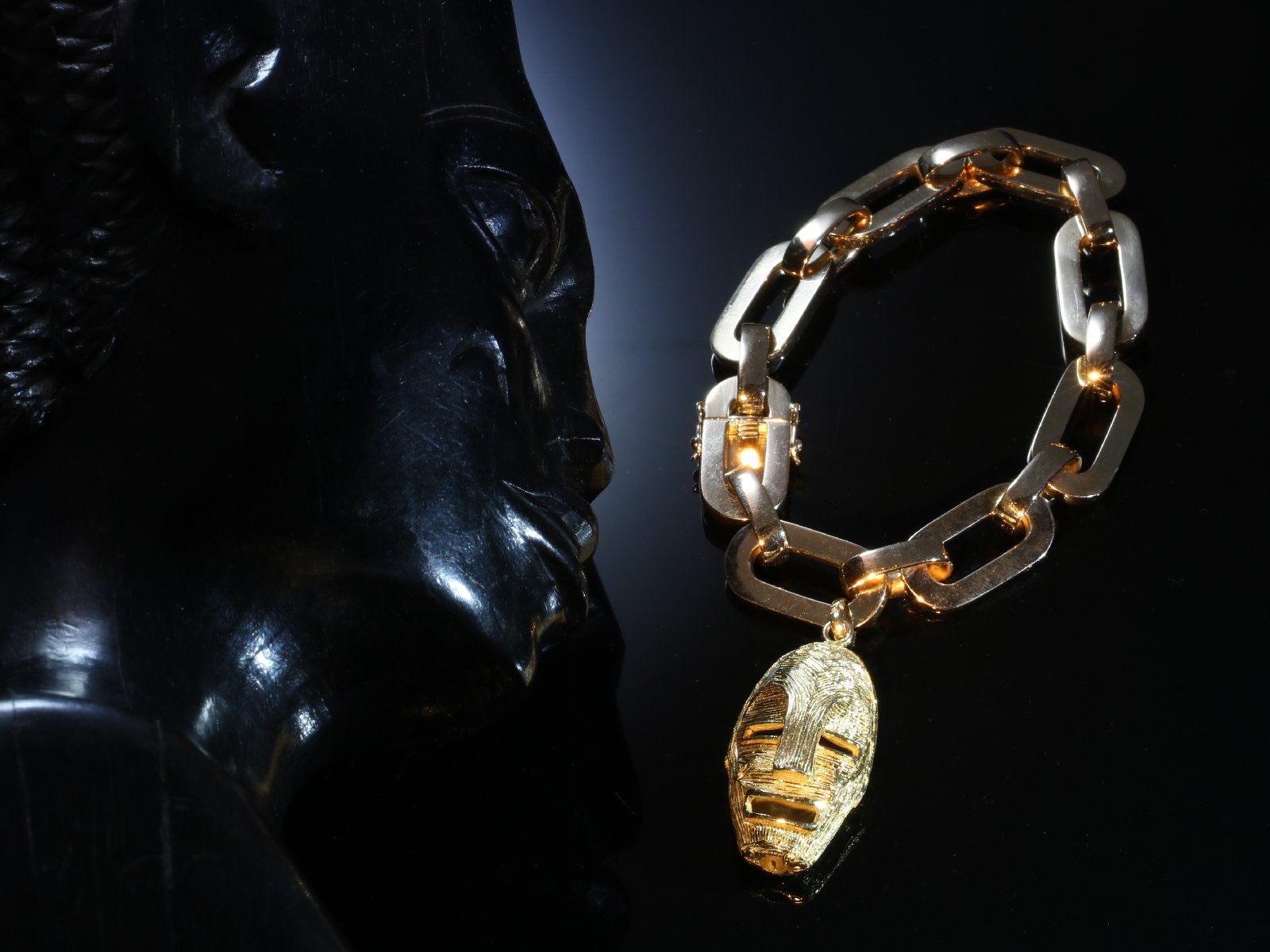 |
This obvious exquisitely crafted Italian Fifties 18K rose gold bracelet chain is the carrier of an 18K yellow gold charm representing an African tribal mask. Not only in style and appearance does this mask strongly resemble those of the African Lega tribe, situated in the eastern Democratic Republic of Congo.
Also, just as Lega masks are usually handheld or appended to the body, and not worn over the face -in contrast to typical masks from other African cultures-, this mask is also made to wear on the wrist and clearly not over the face.
Generally, exclusively the members of the highest ranks of this community are allowed to own and show these masks, which made the Lega mask to evolve into and serve as a sort of passport proving who you are and where you're from. This bracelet could just be your permit to yet to discover worlds, who knows...
For both the characteristics of its quality as for more information about these masks, we invite you to visit the jewellery webpage of this outstanding and unique piece.
Old Chinese Wisdom
in The Garden of Adin:
花 开 堪 折 直 需 折
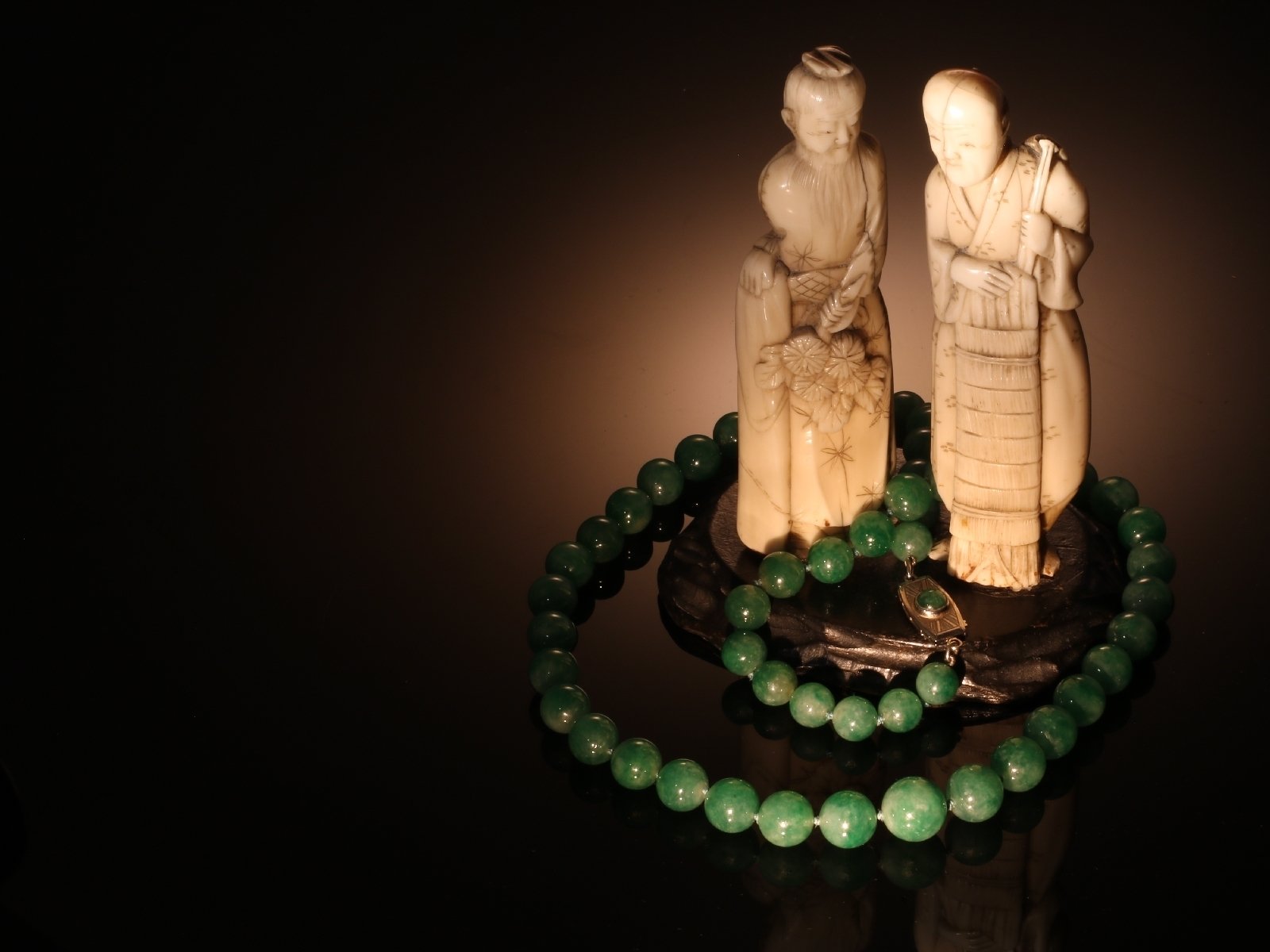 |
Gather ye rosebuds while ye may.



